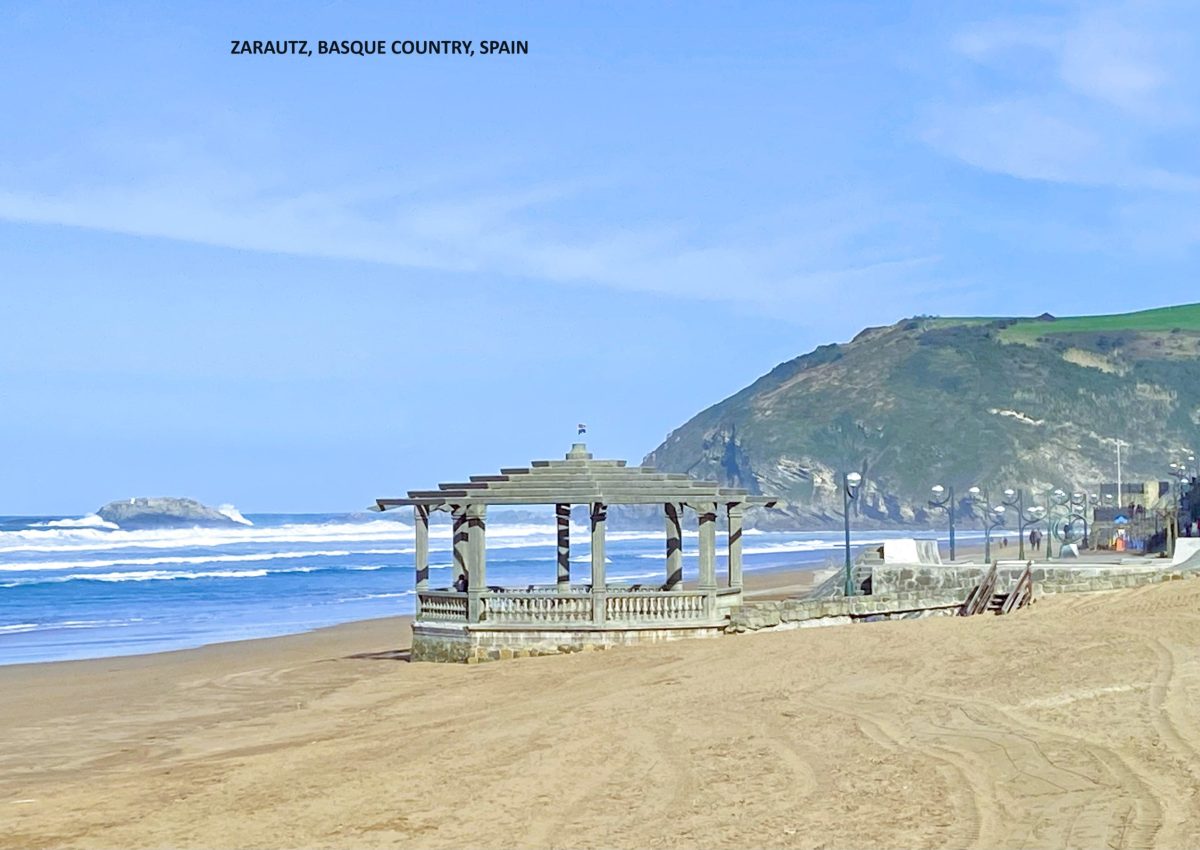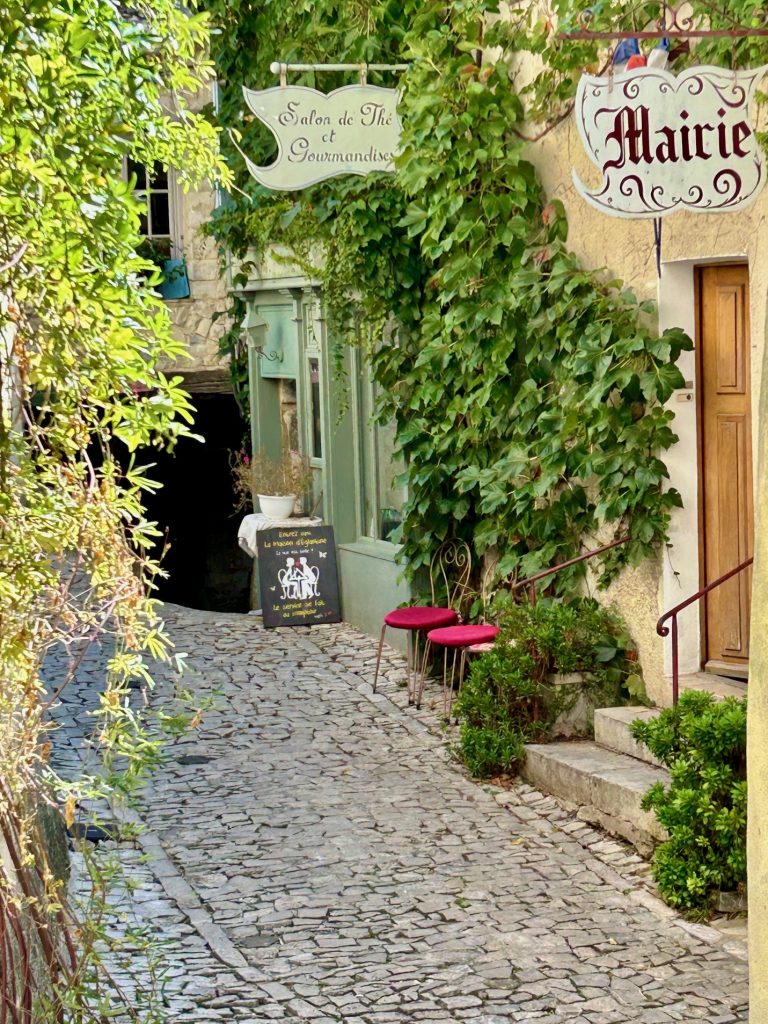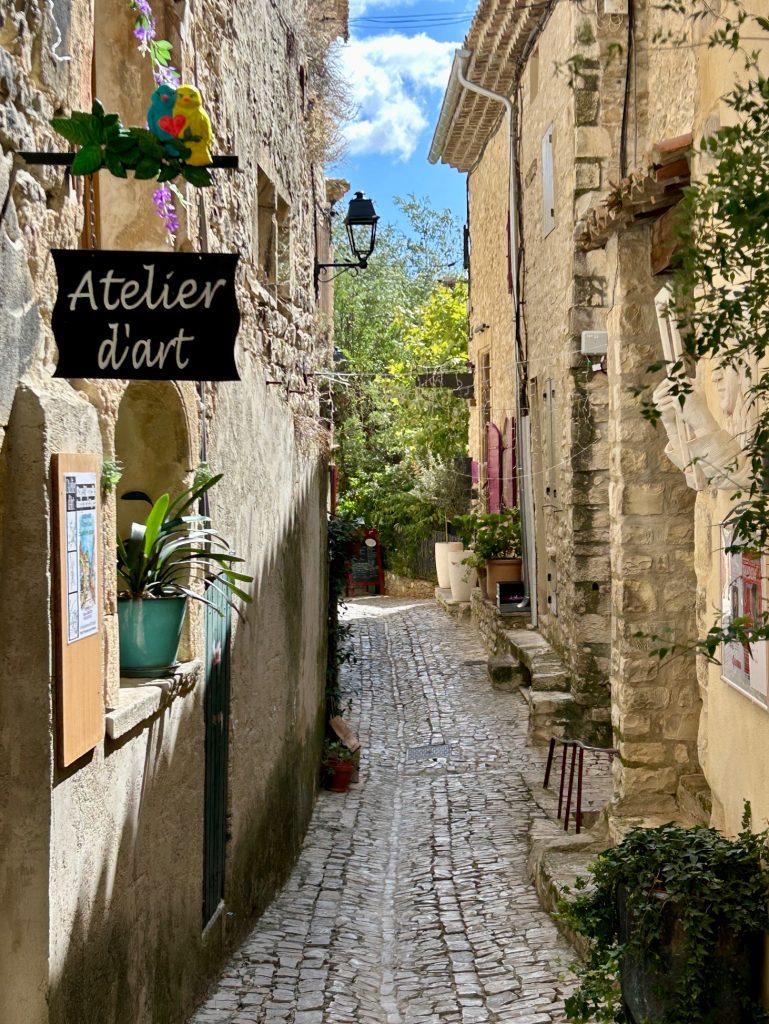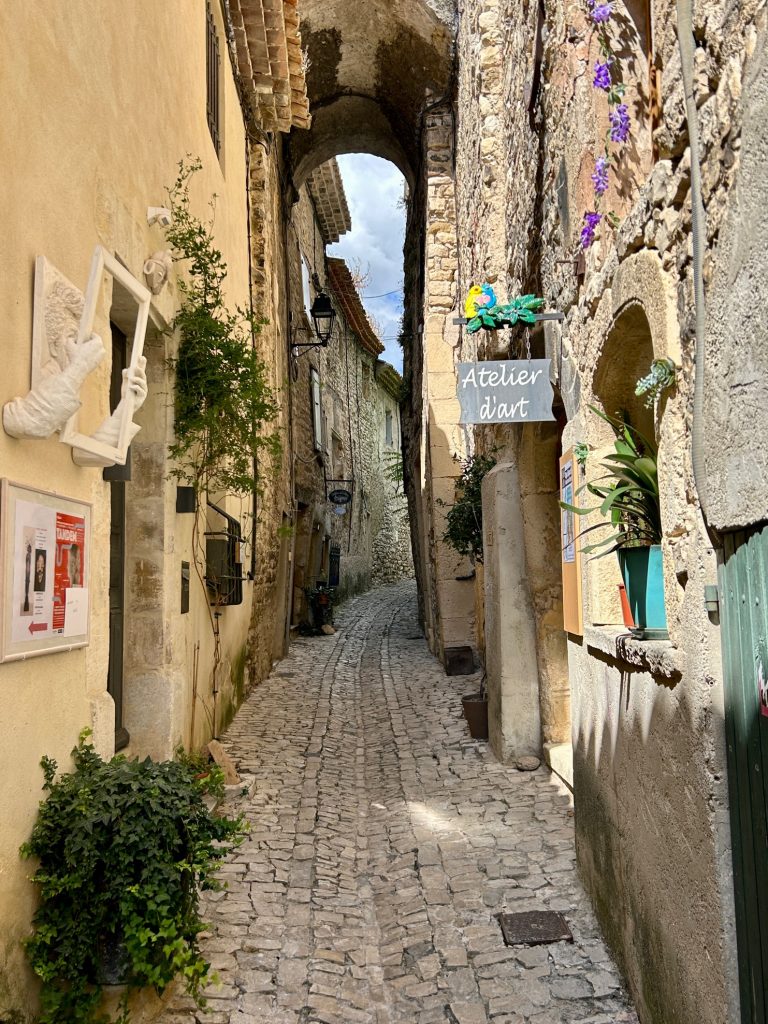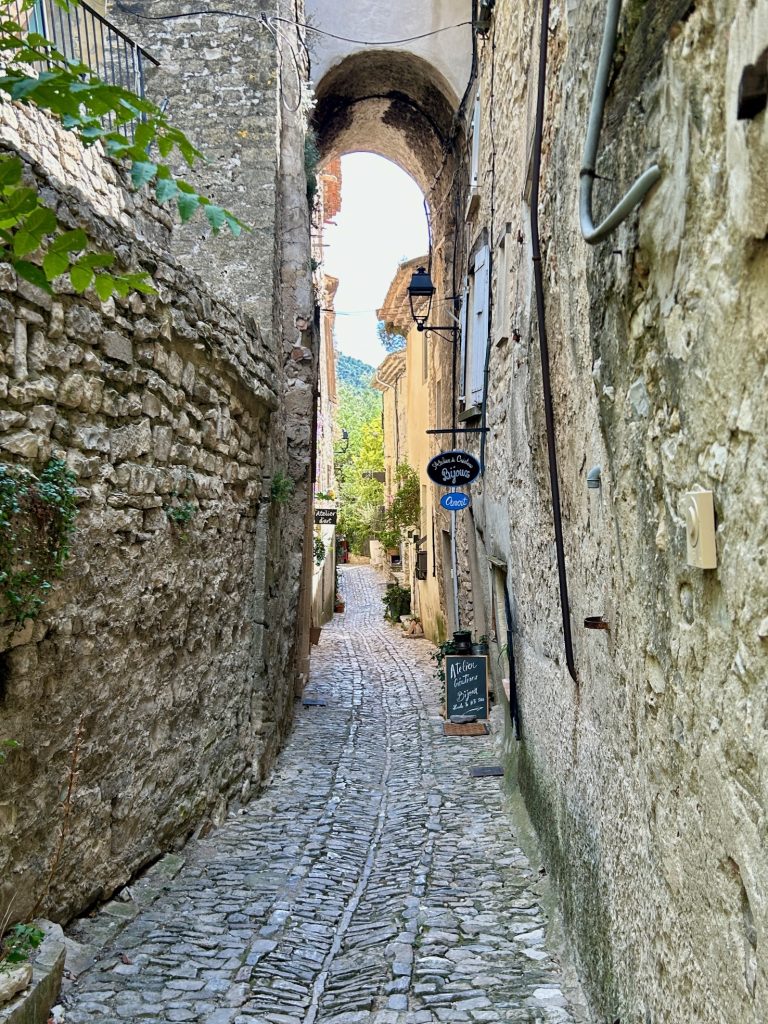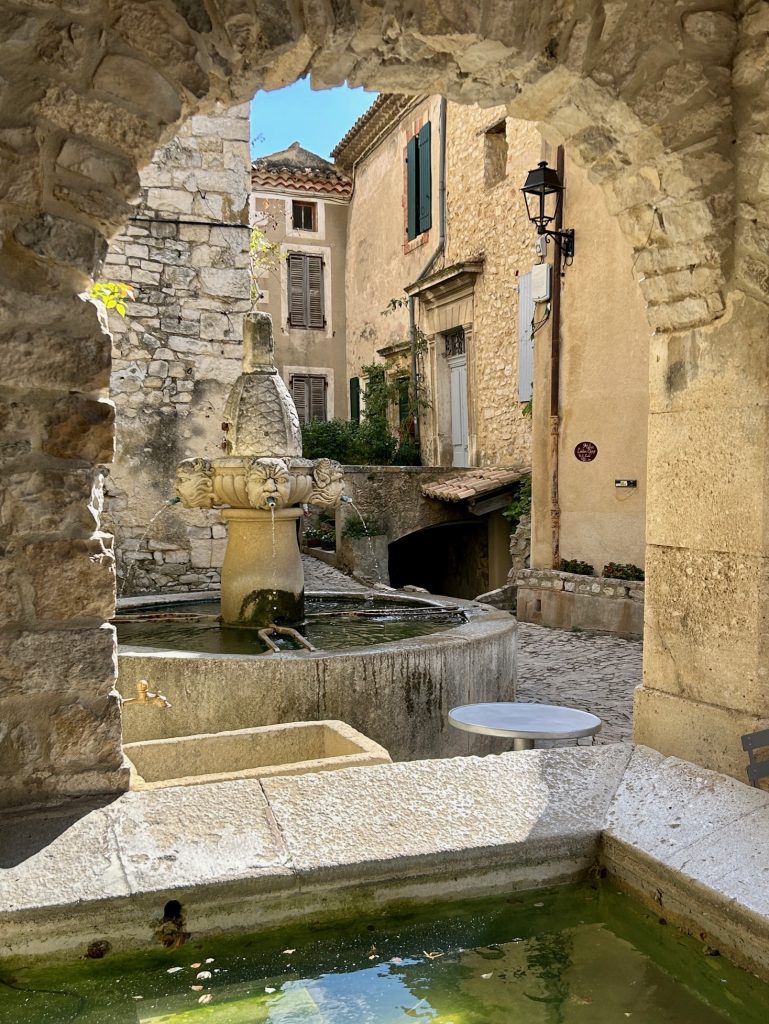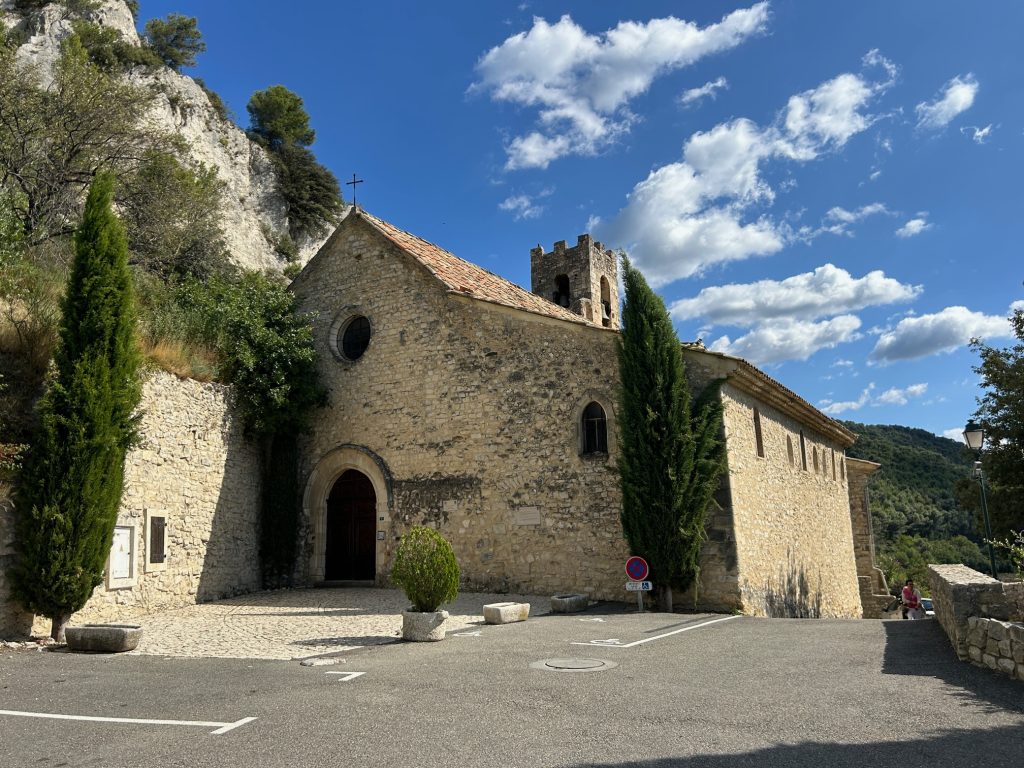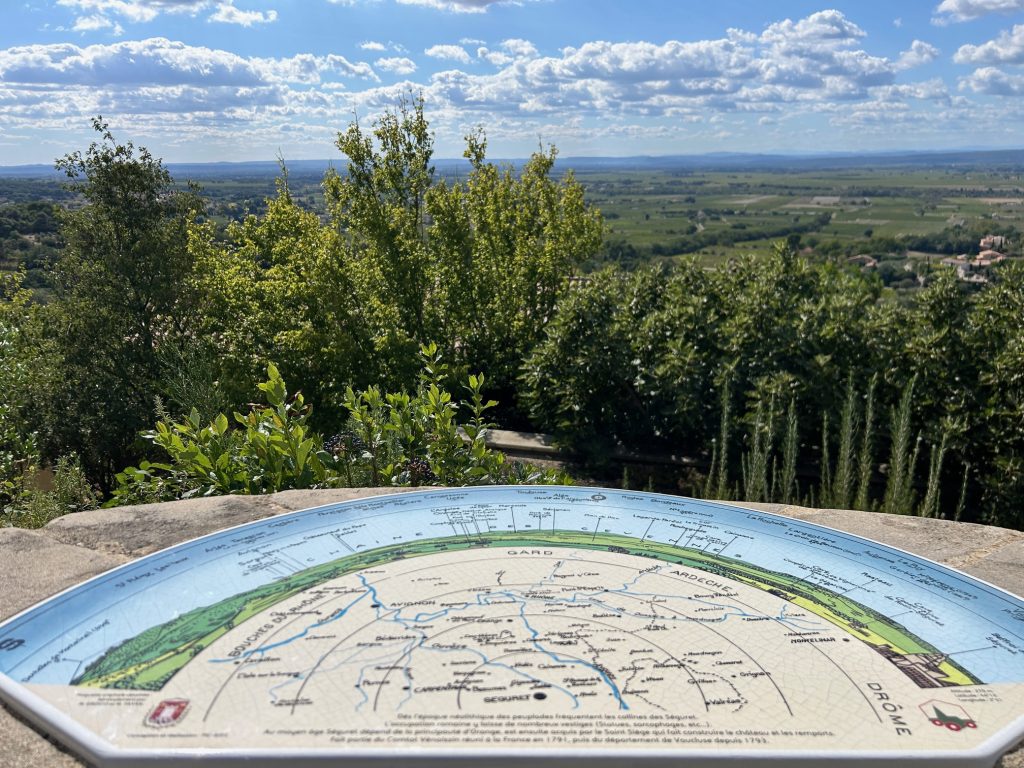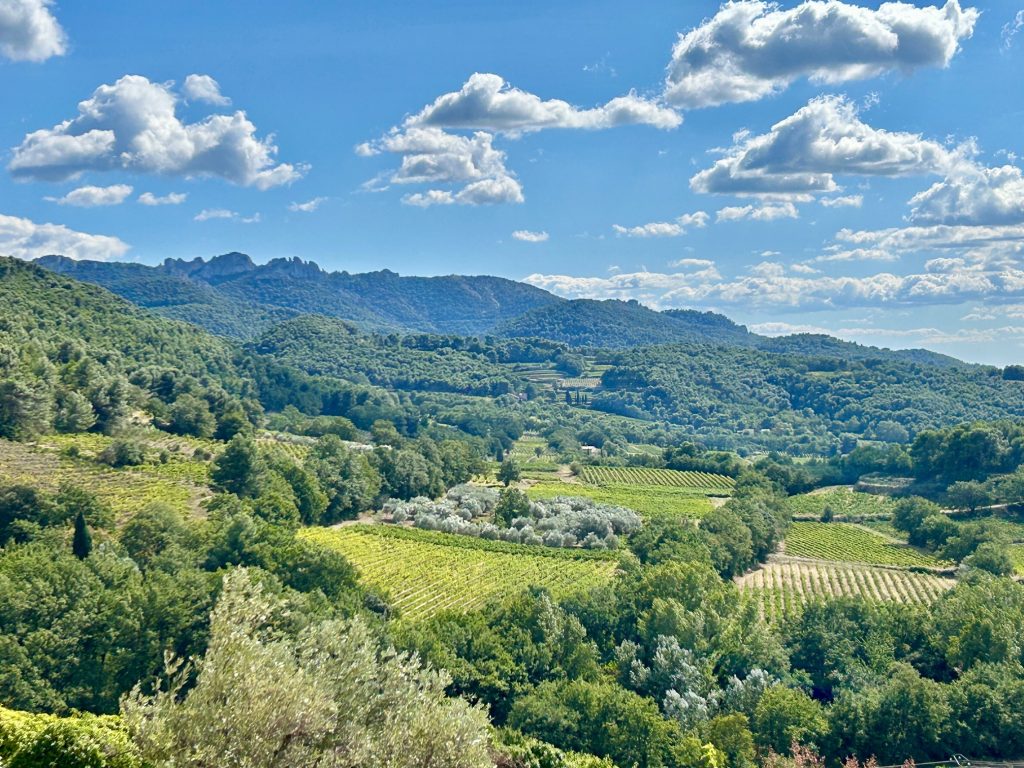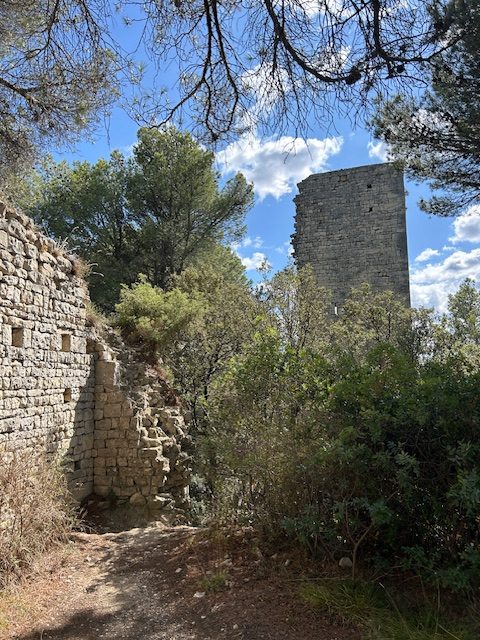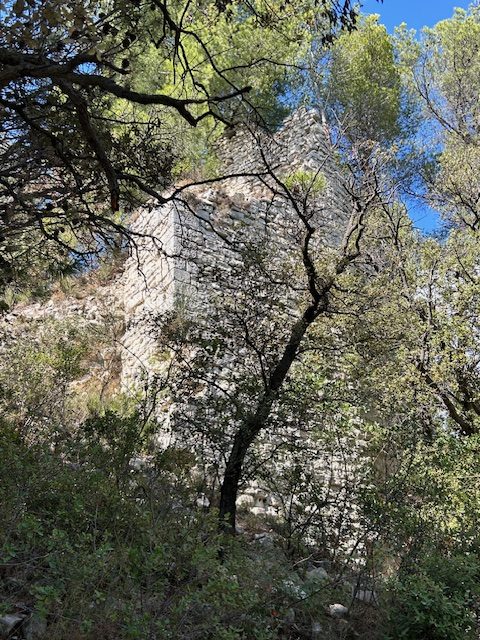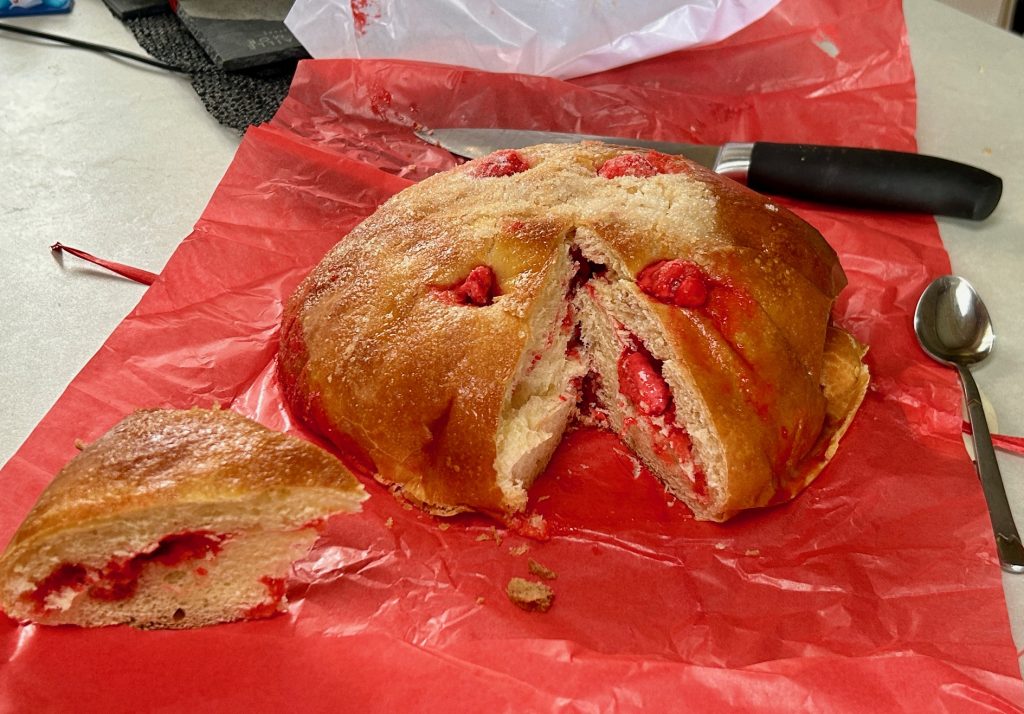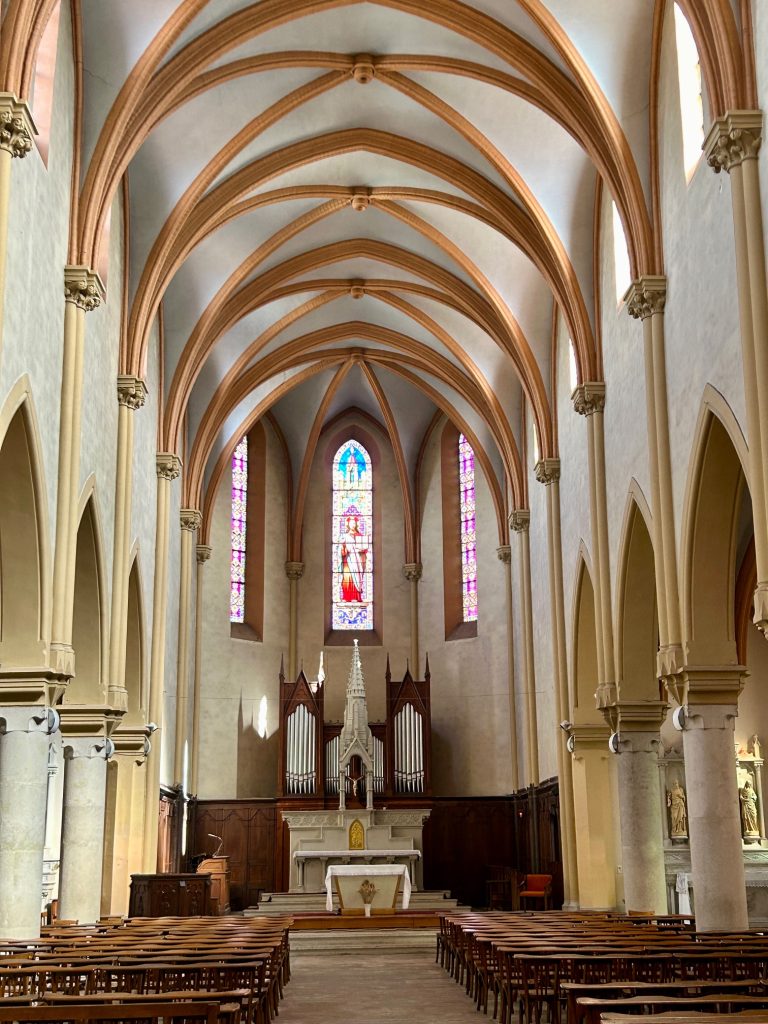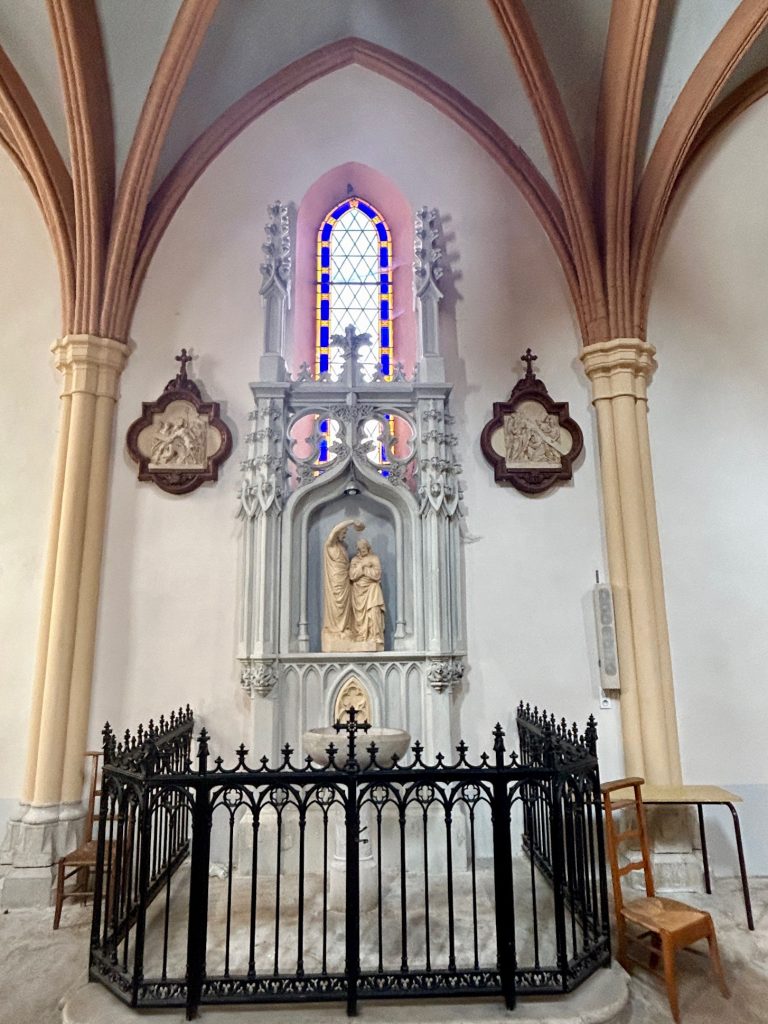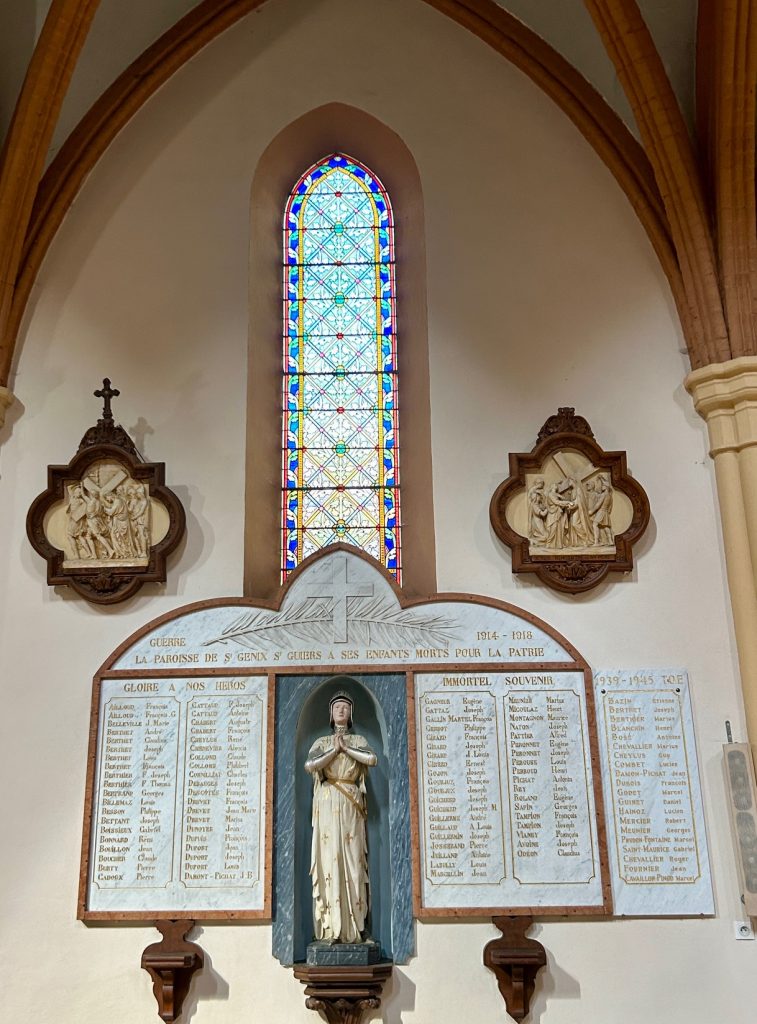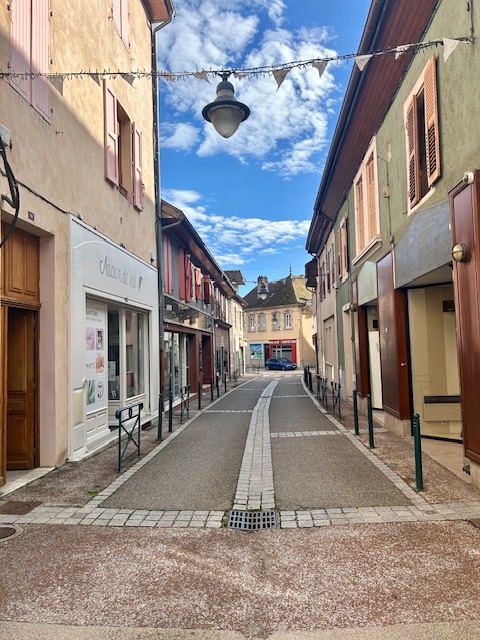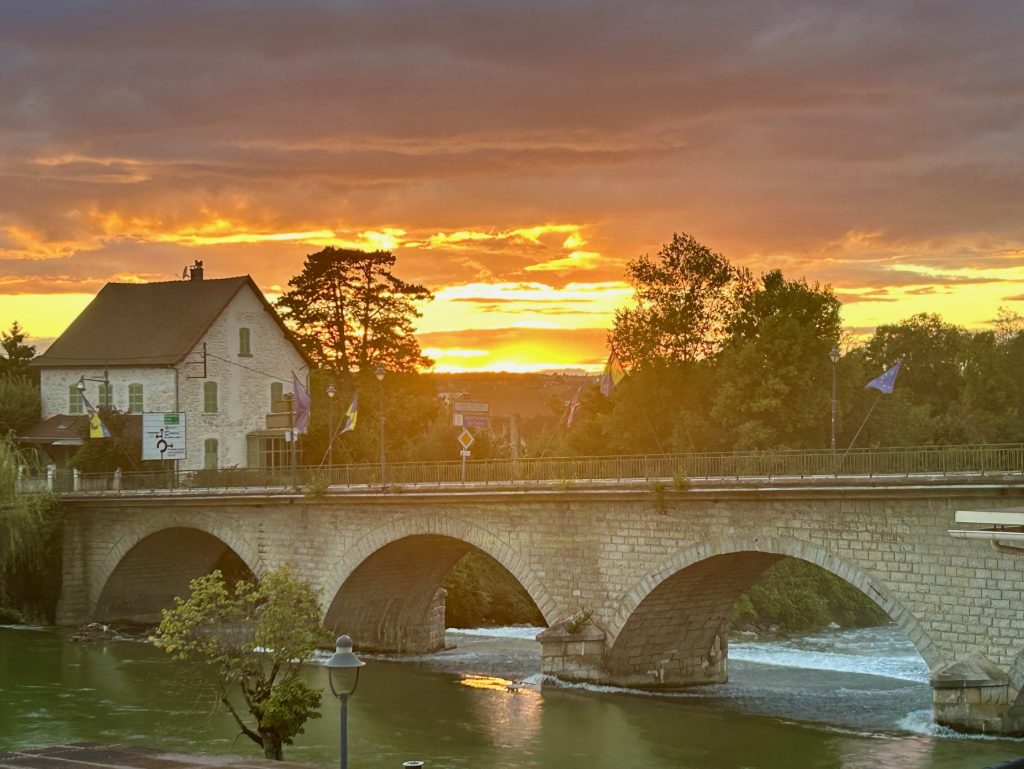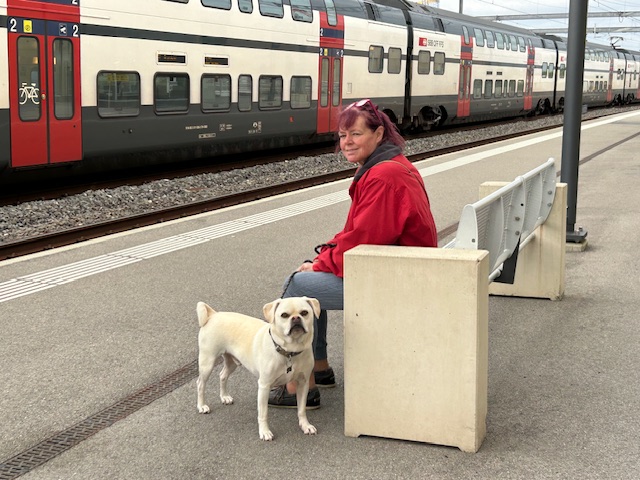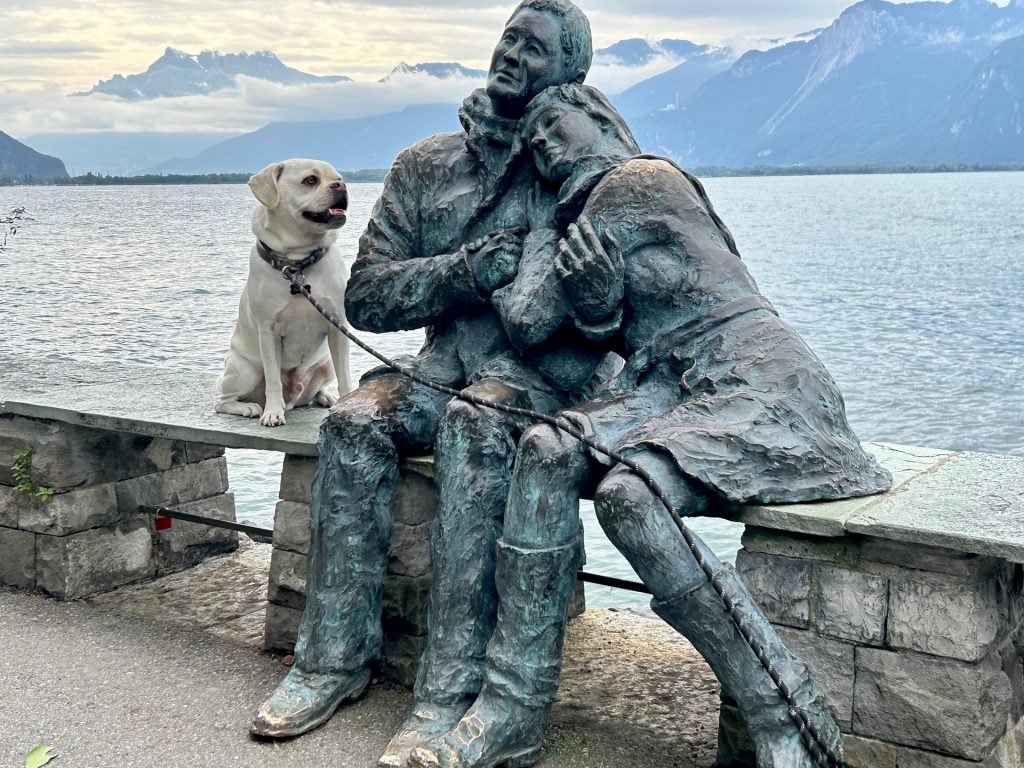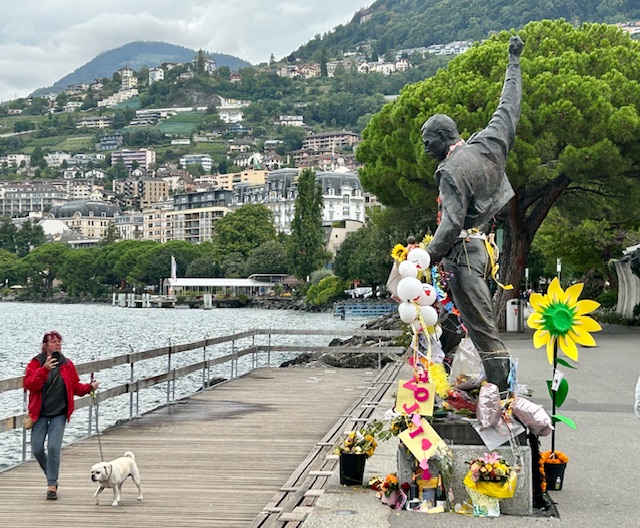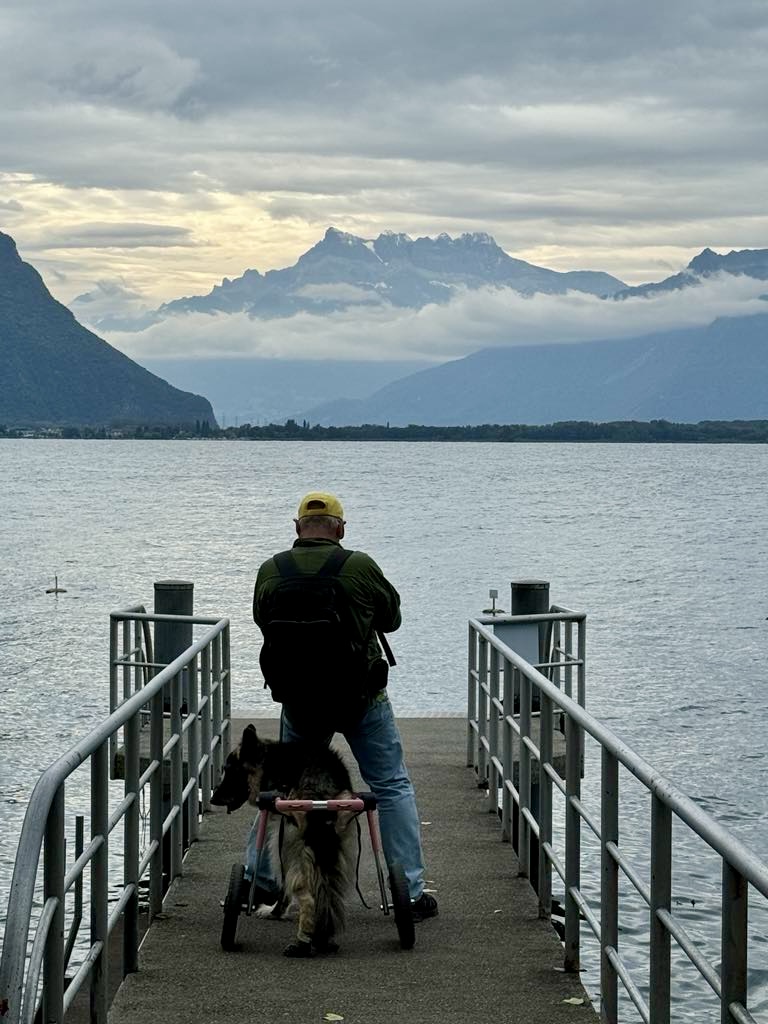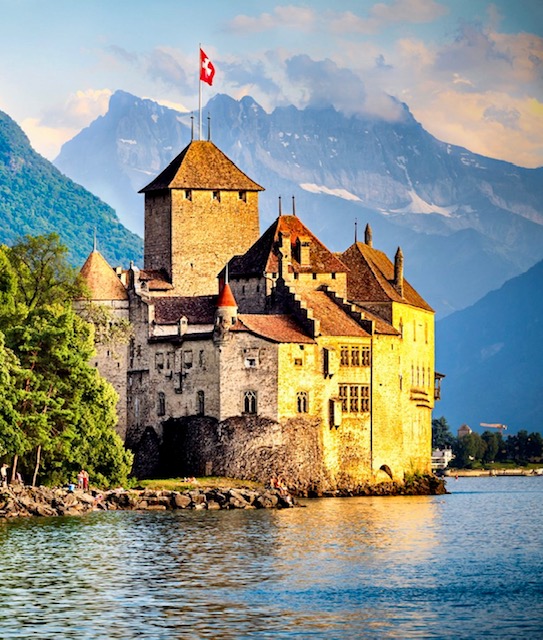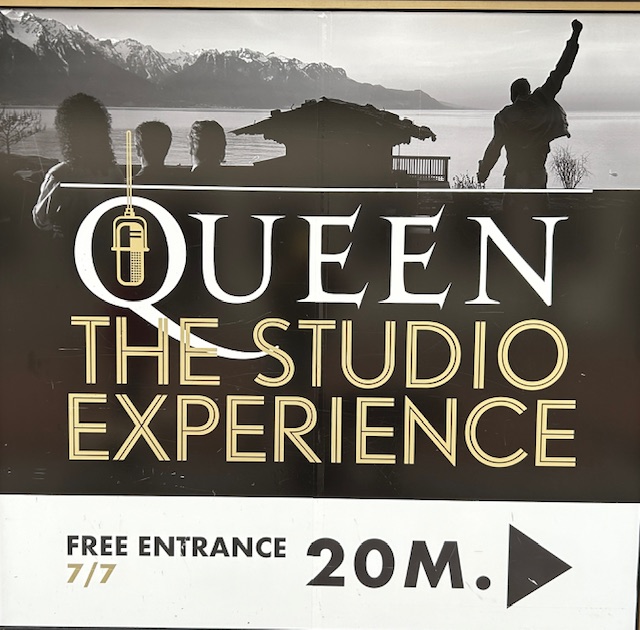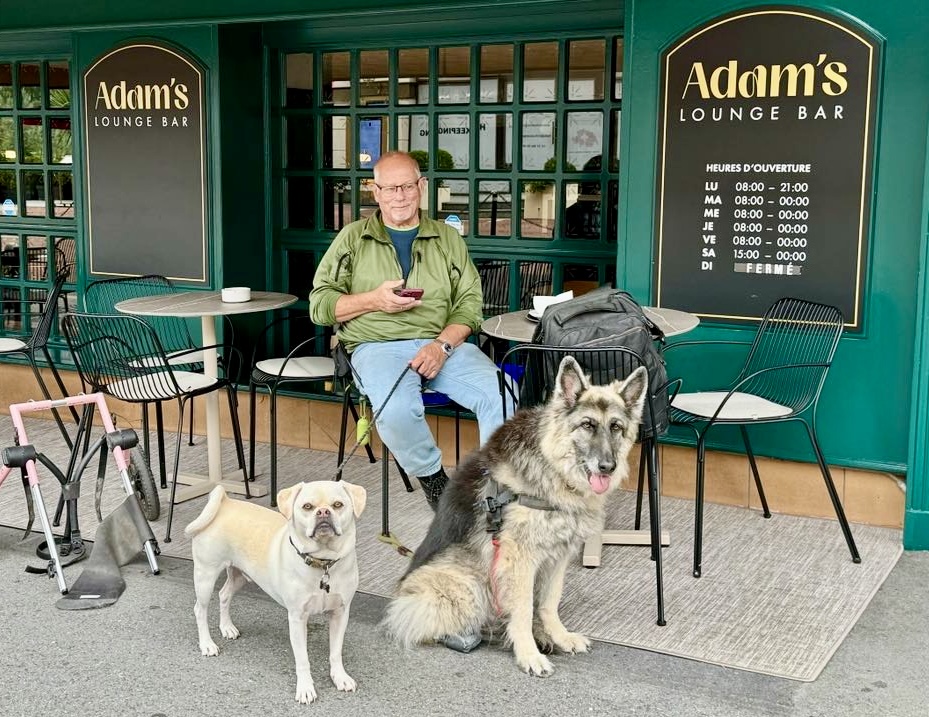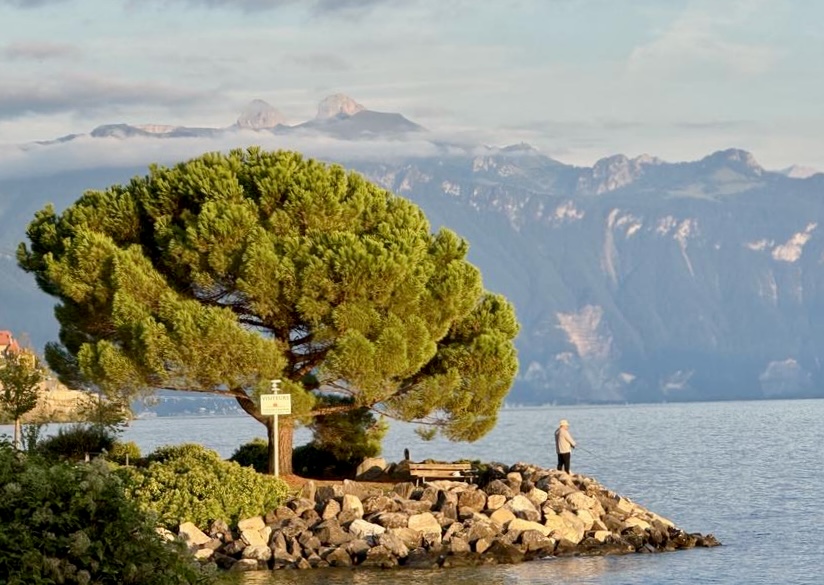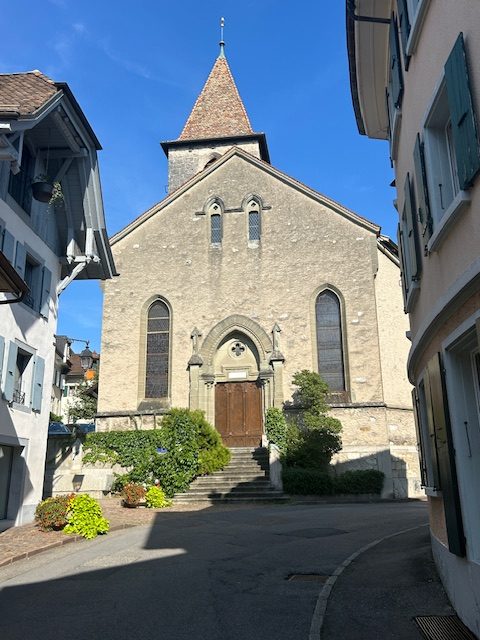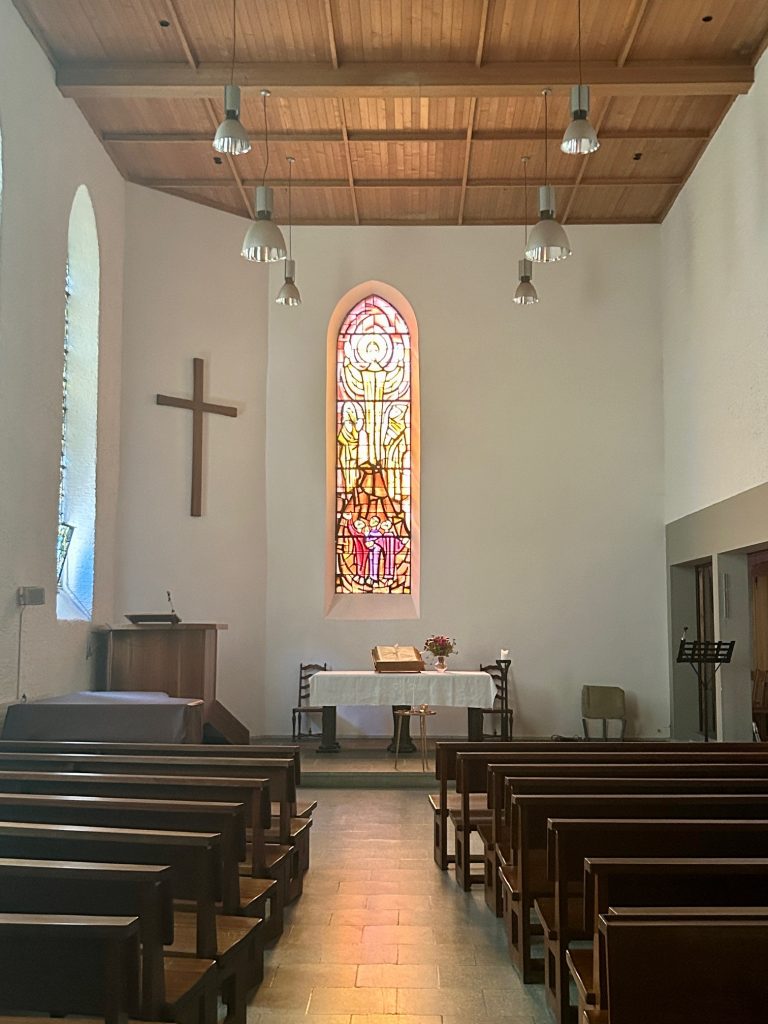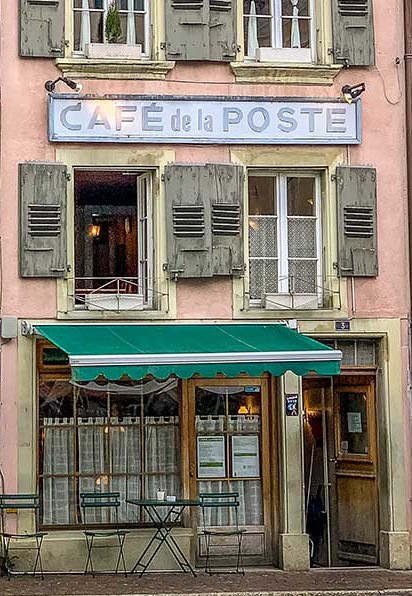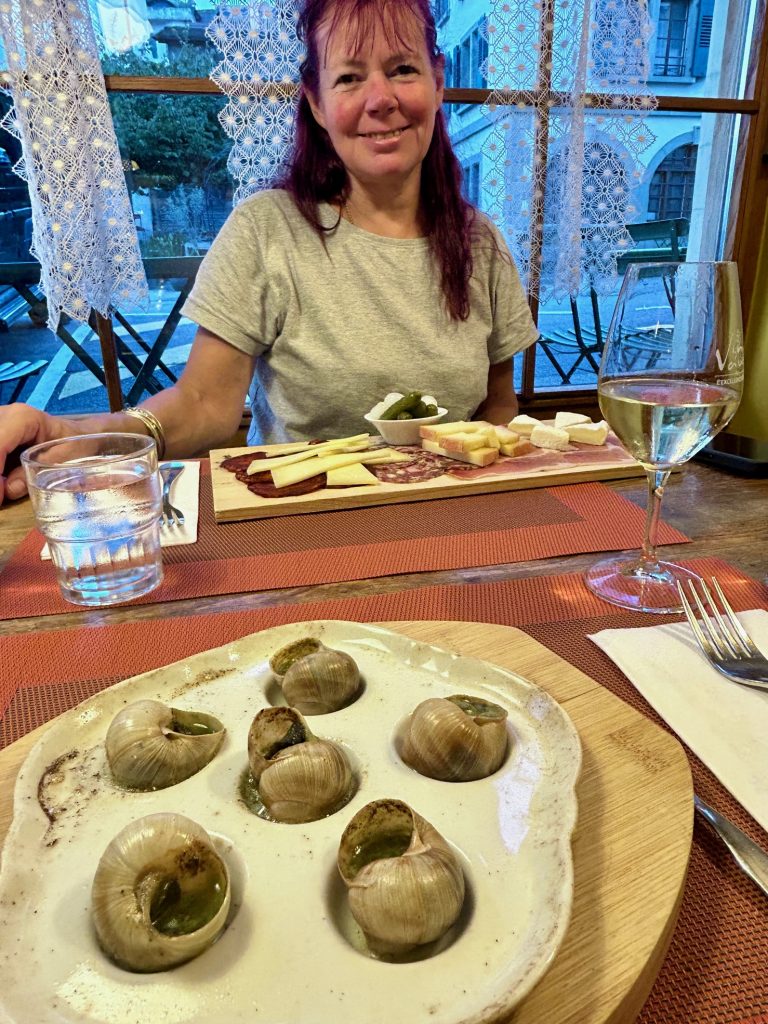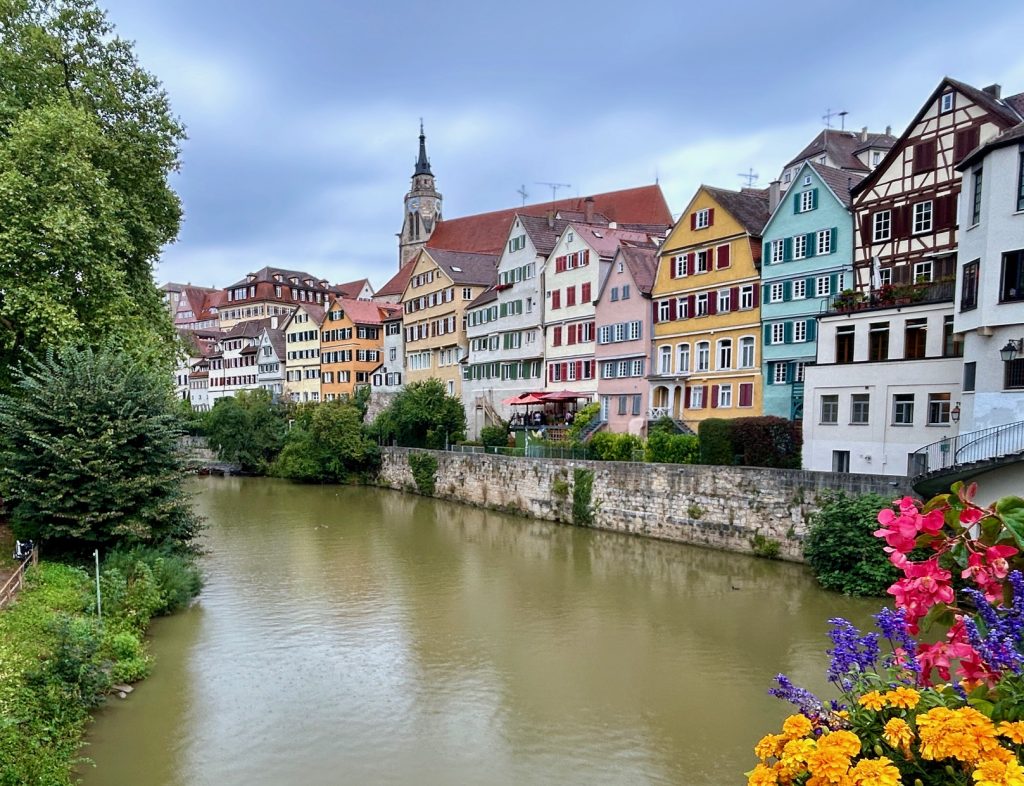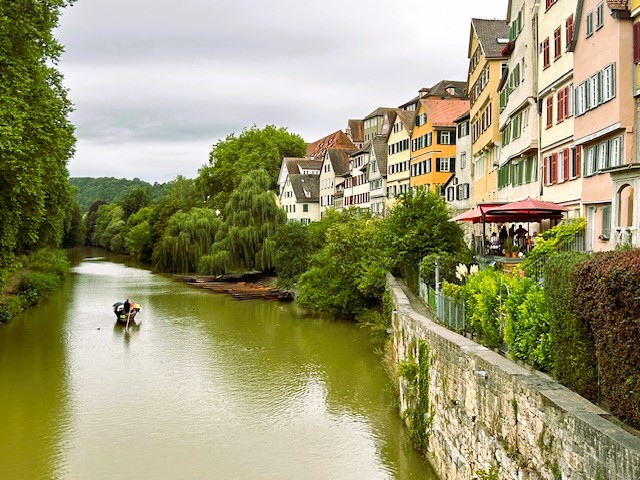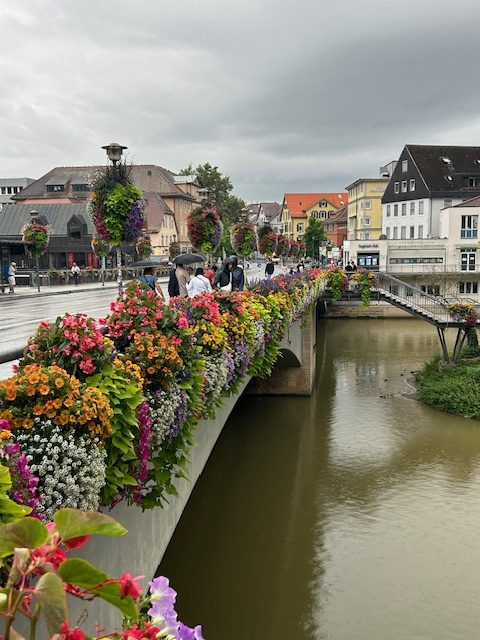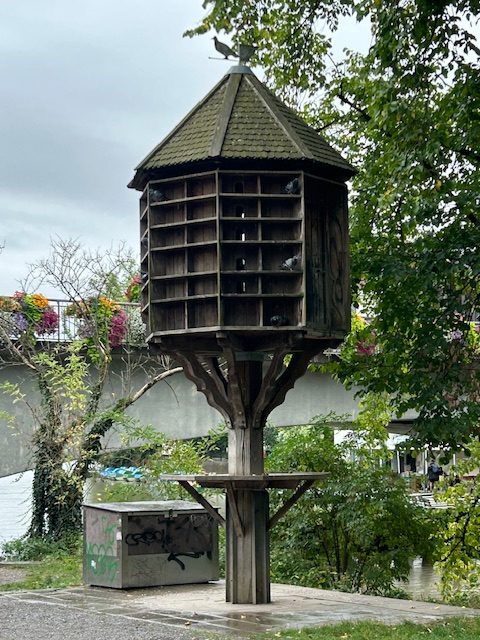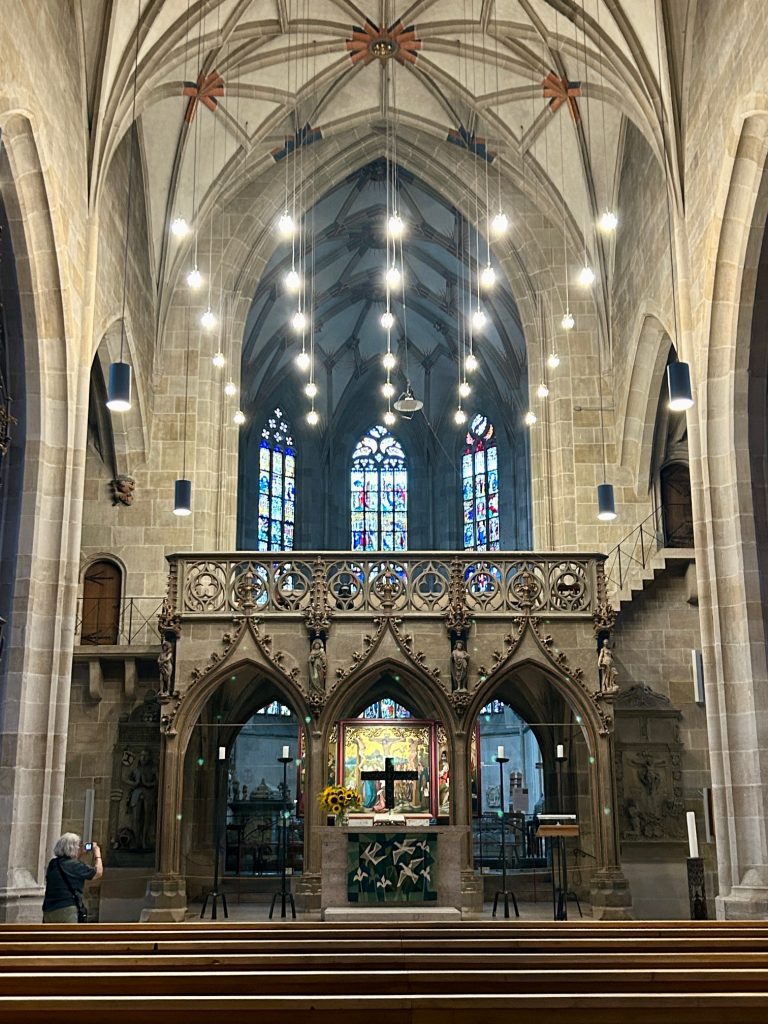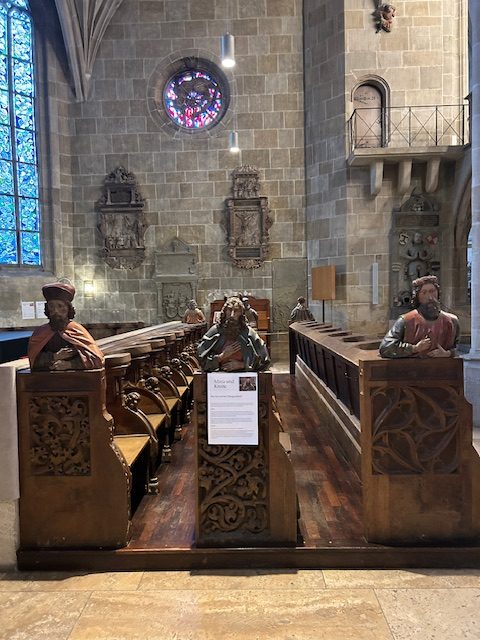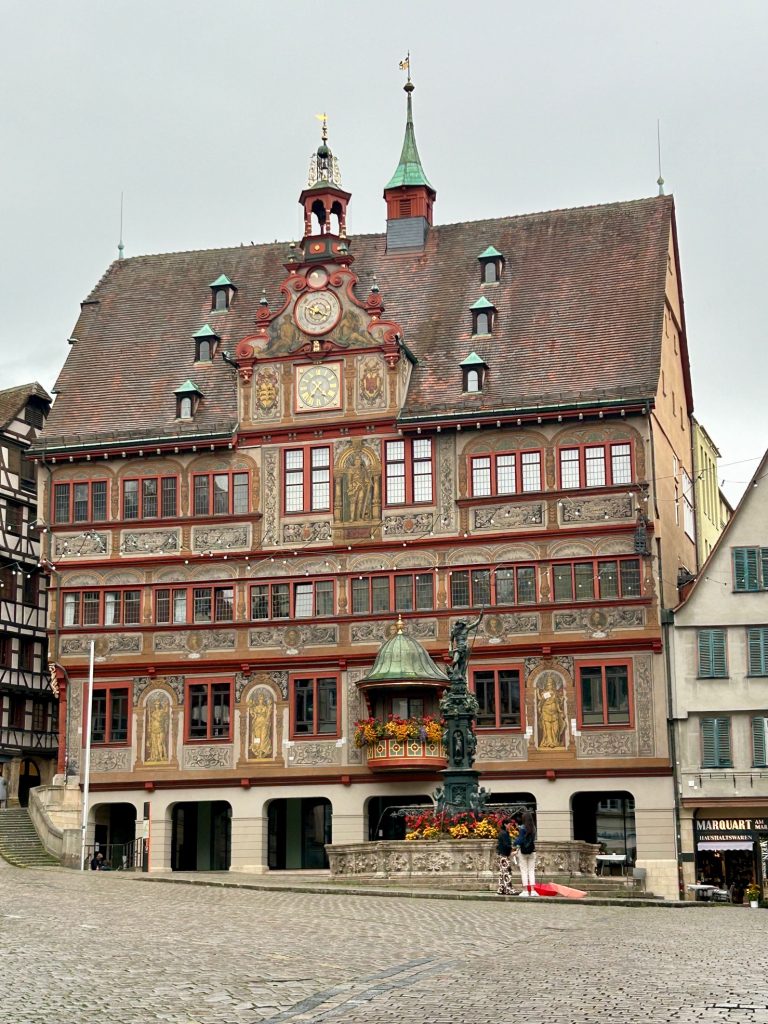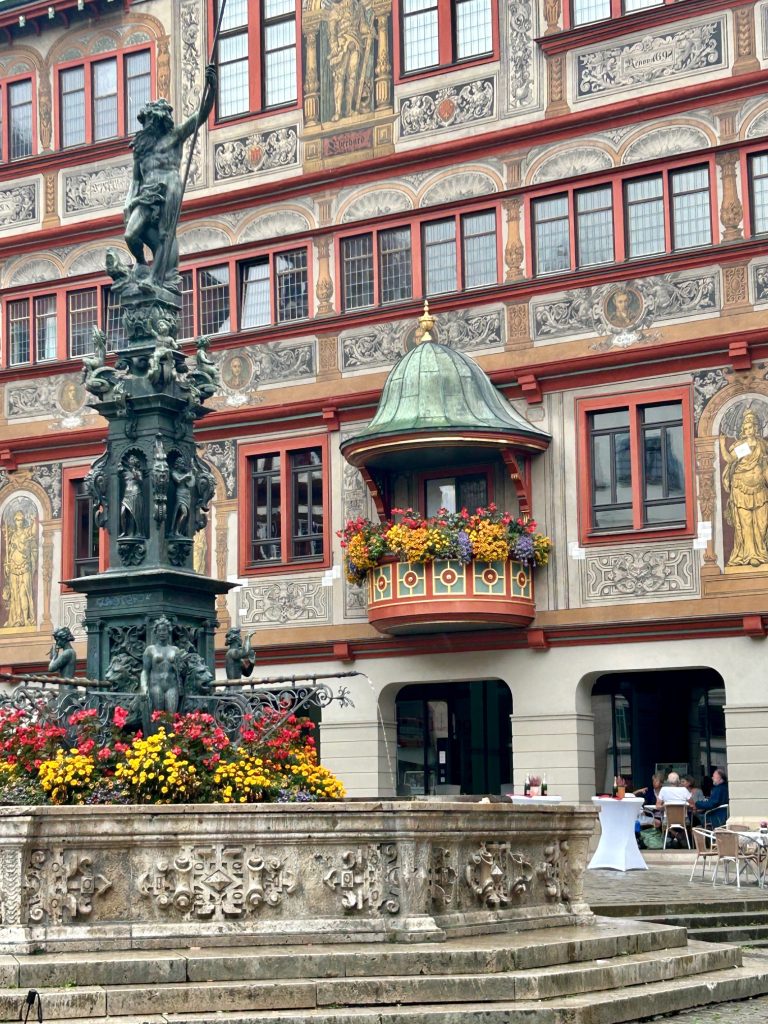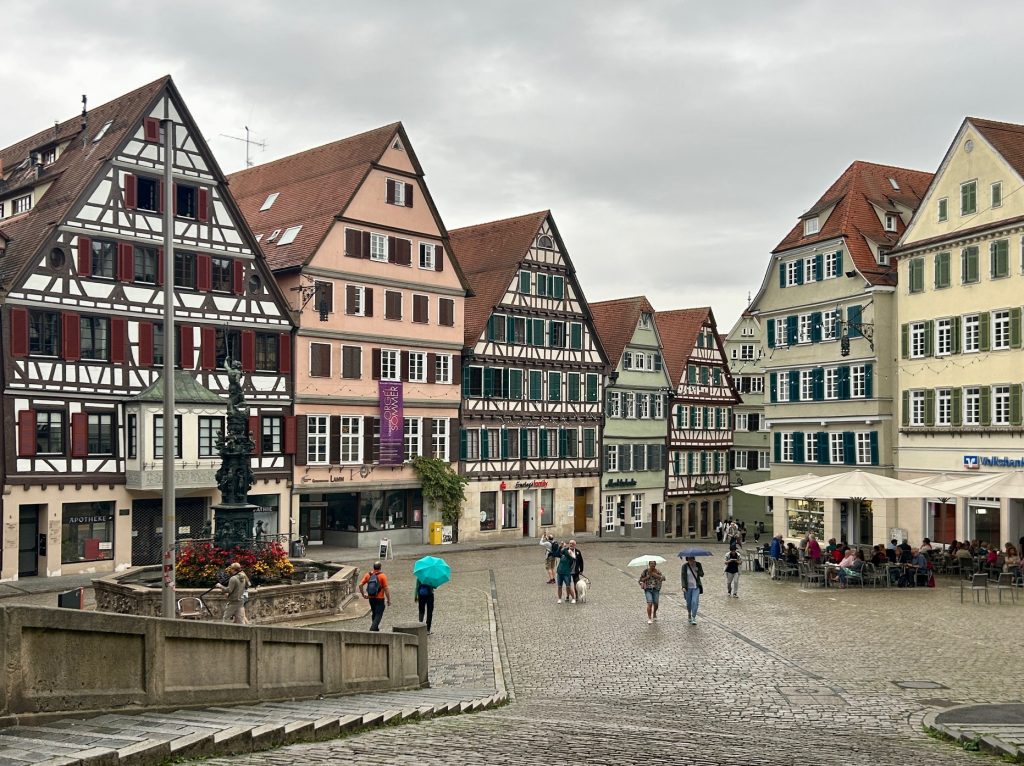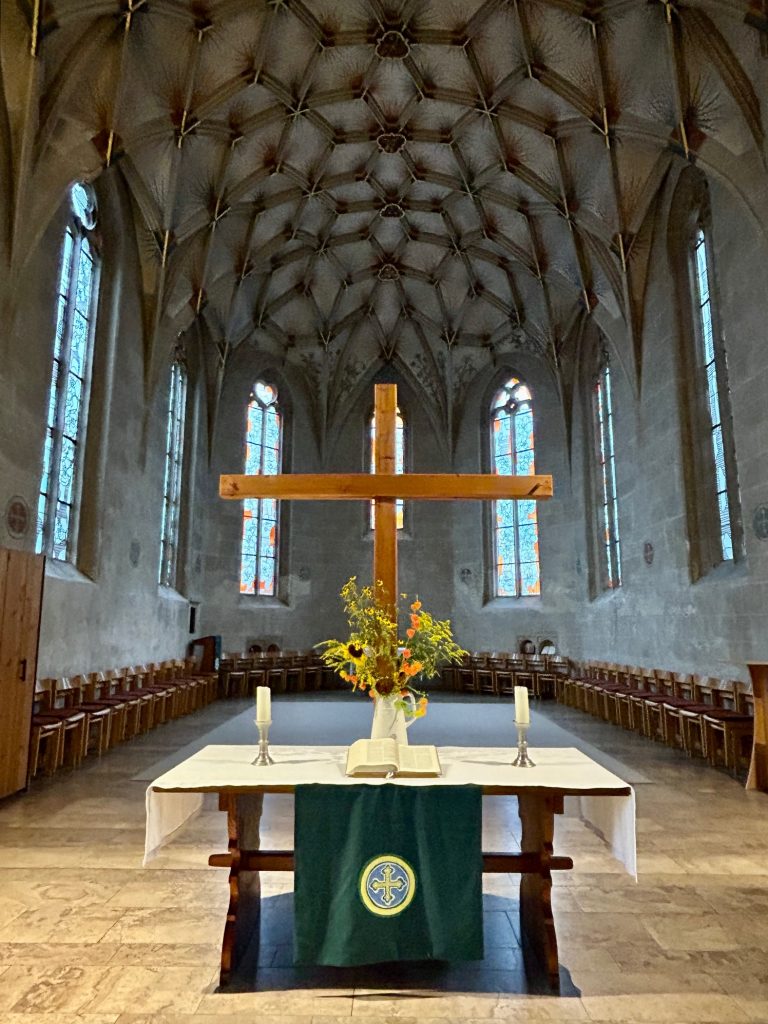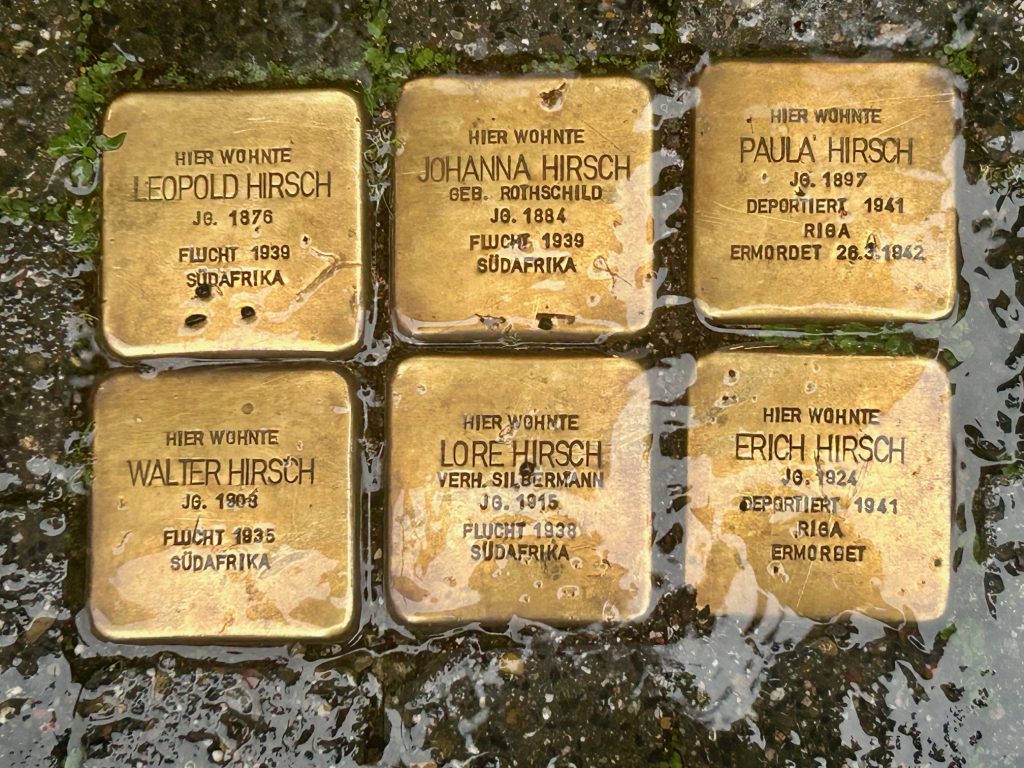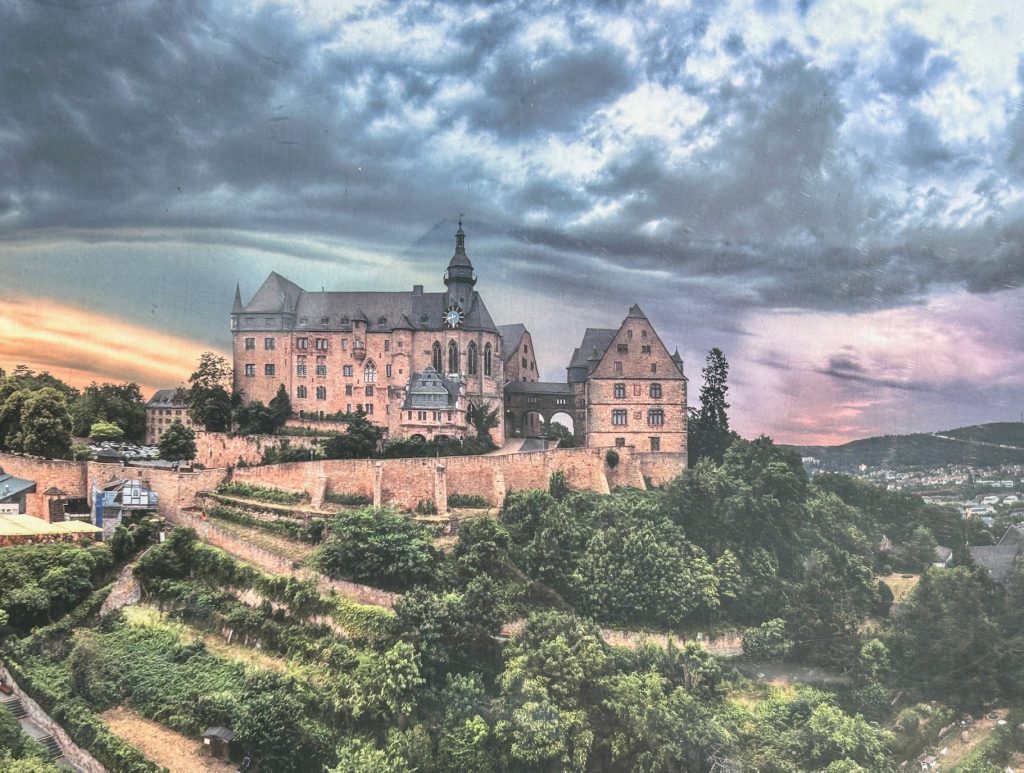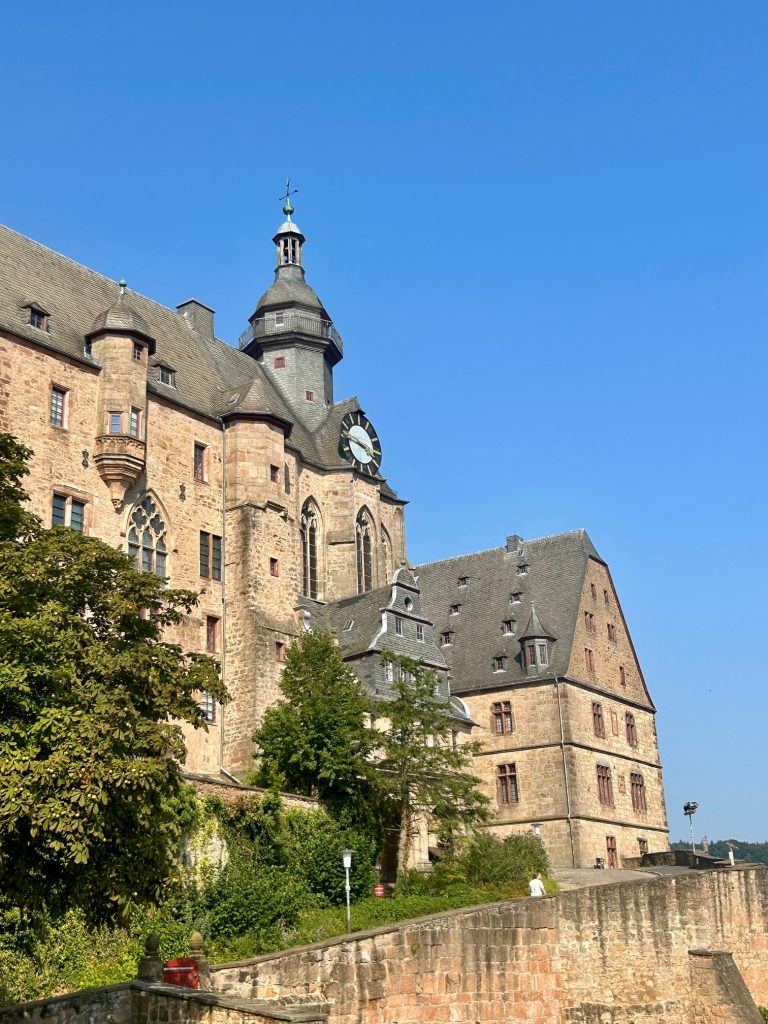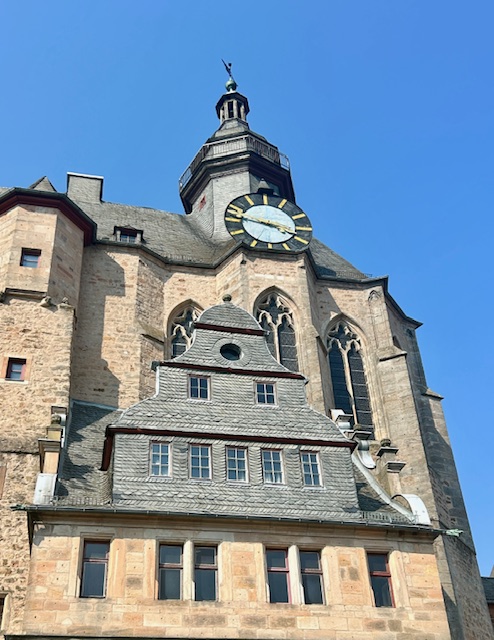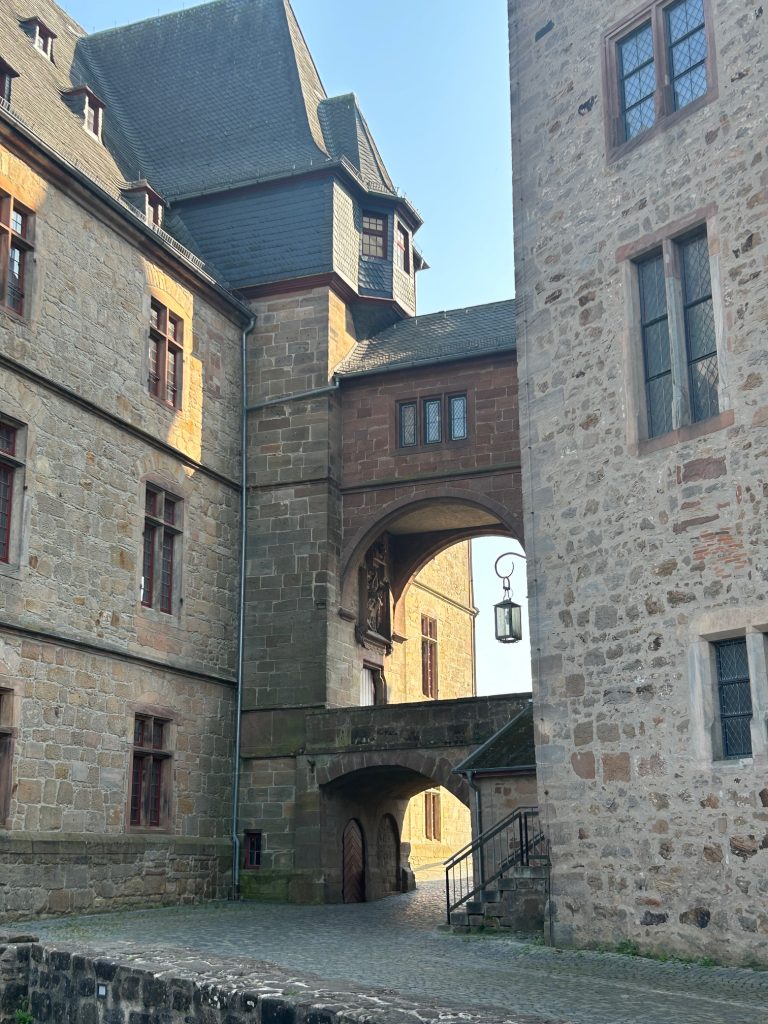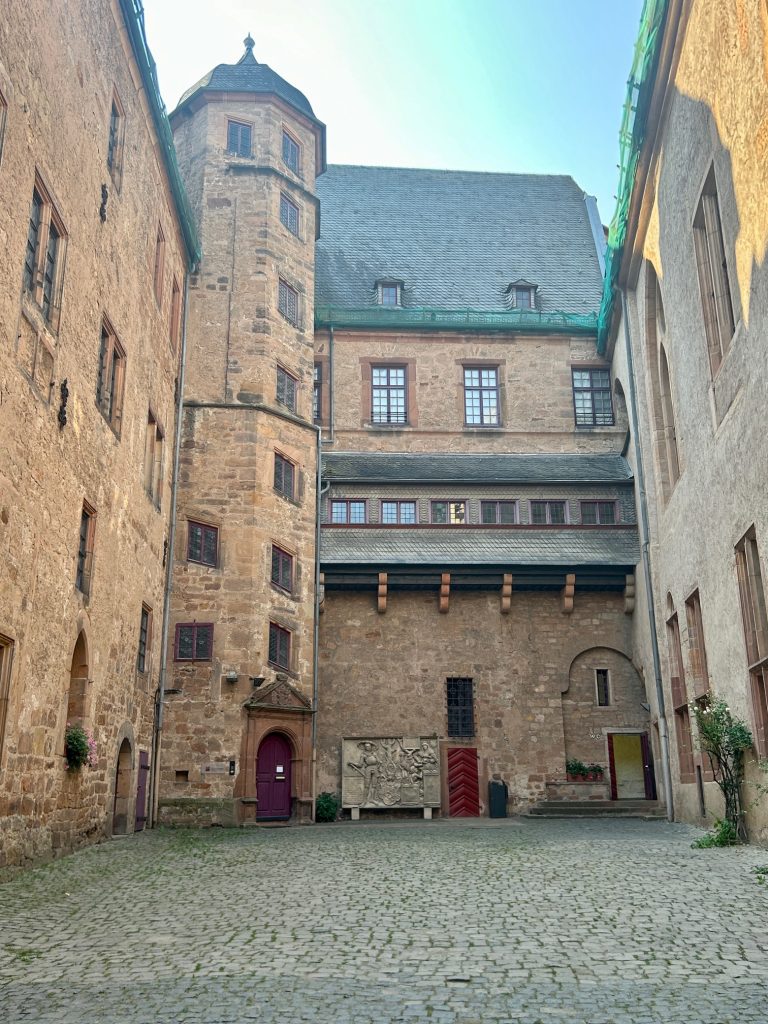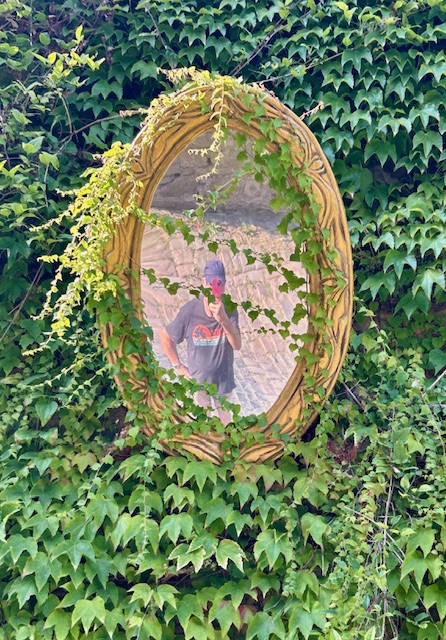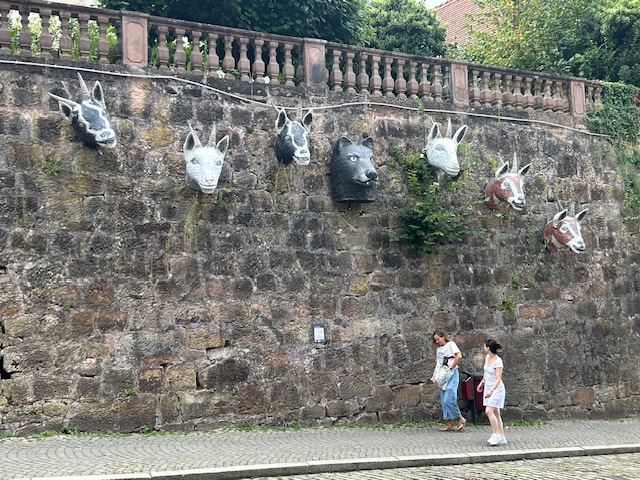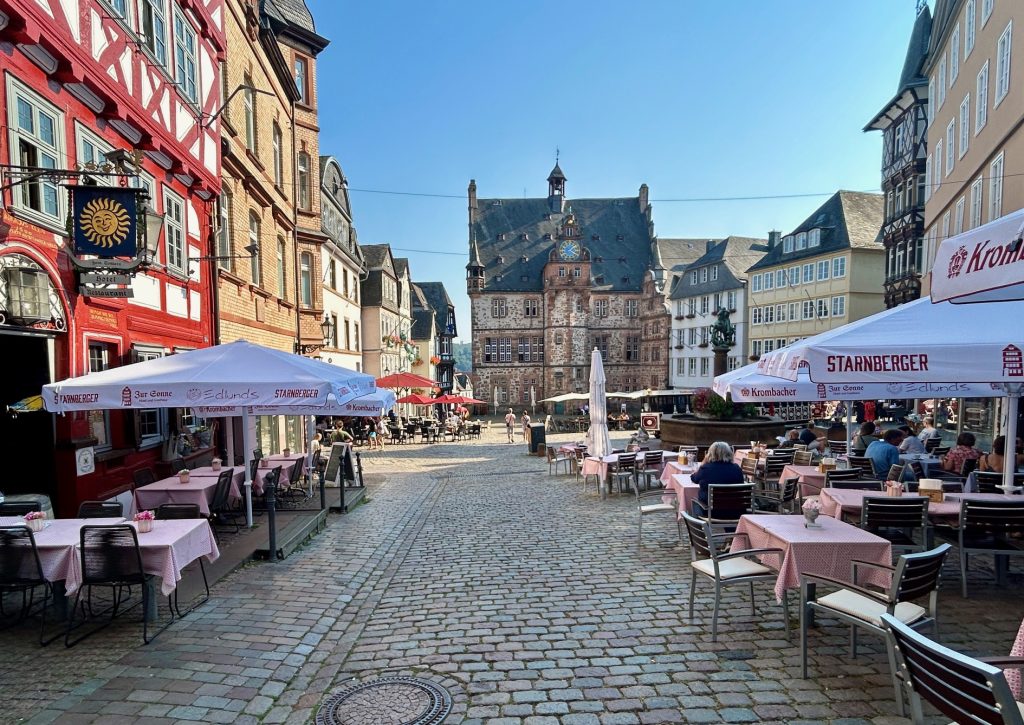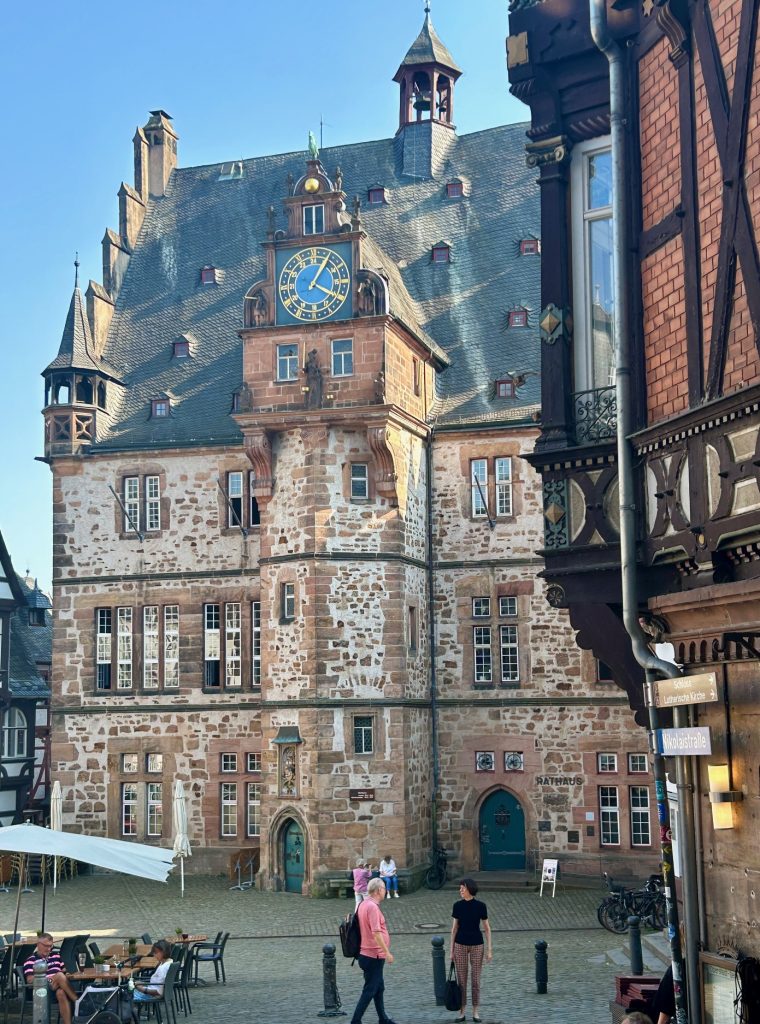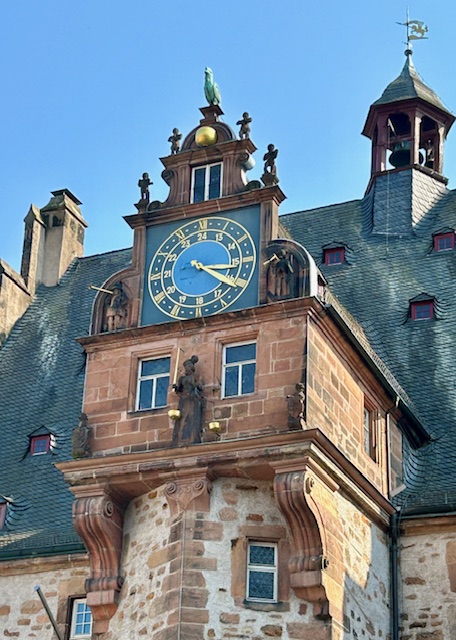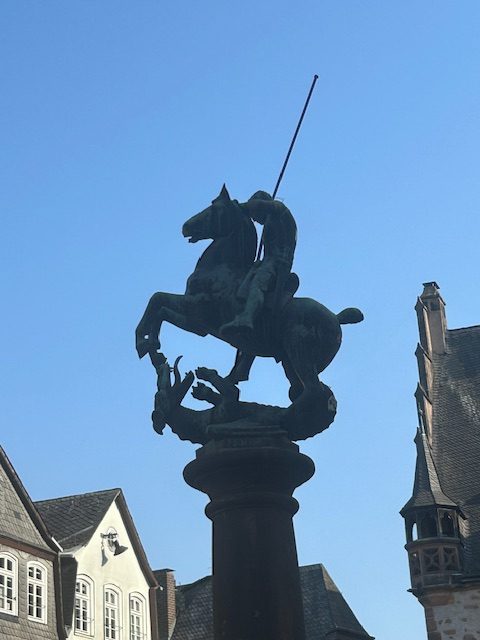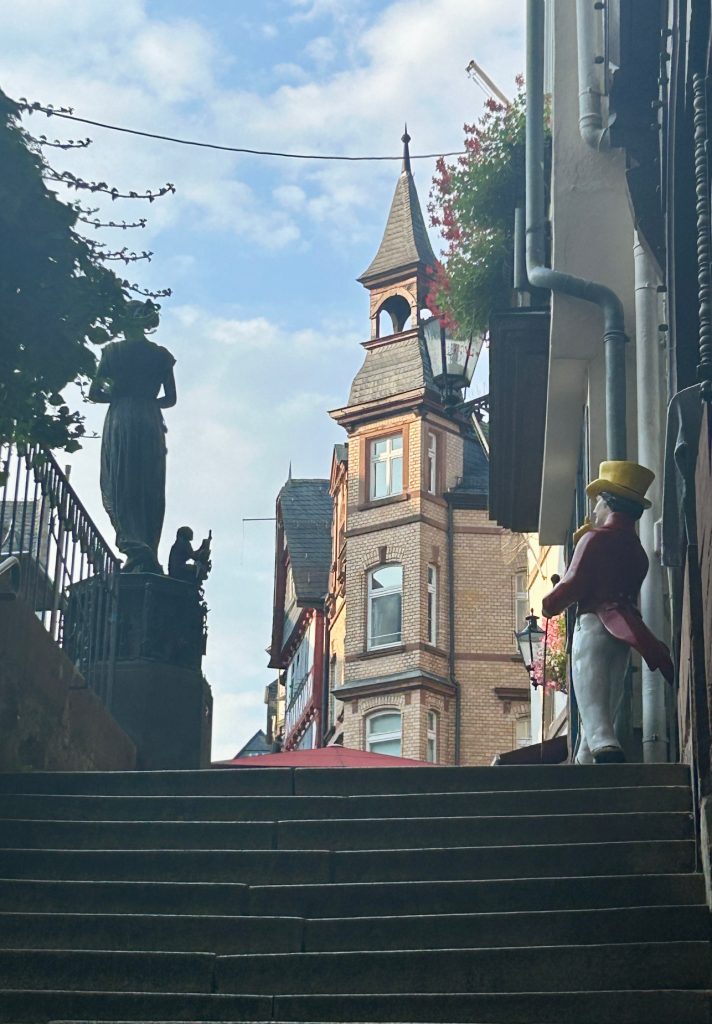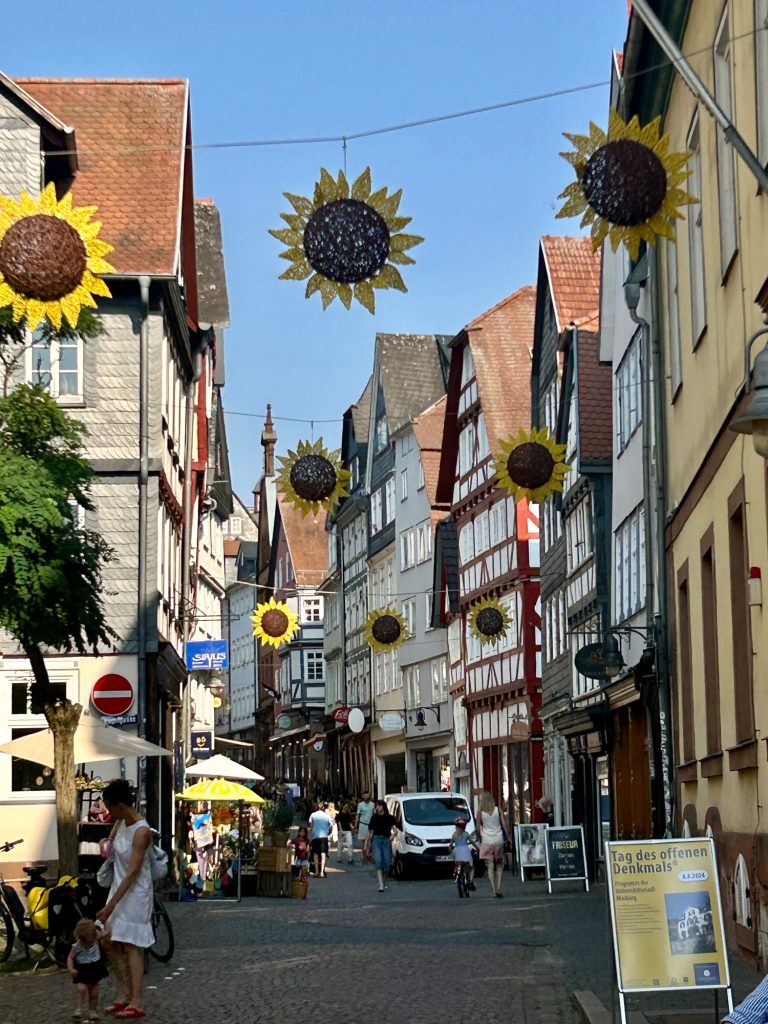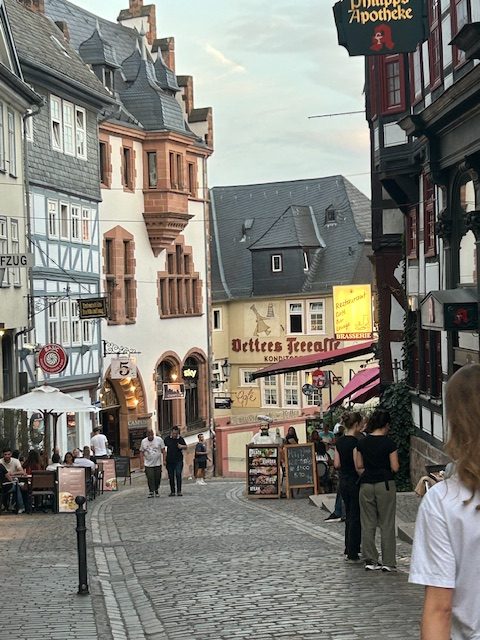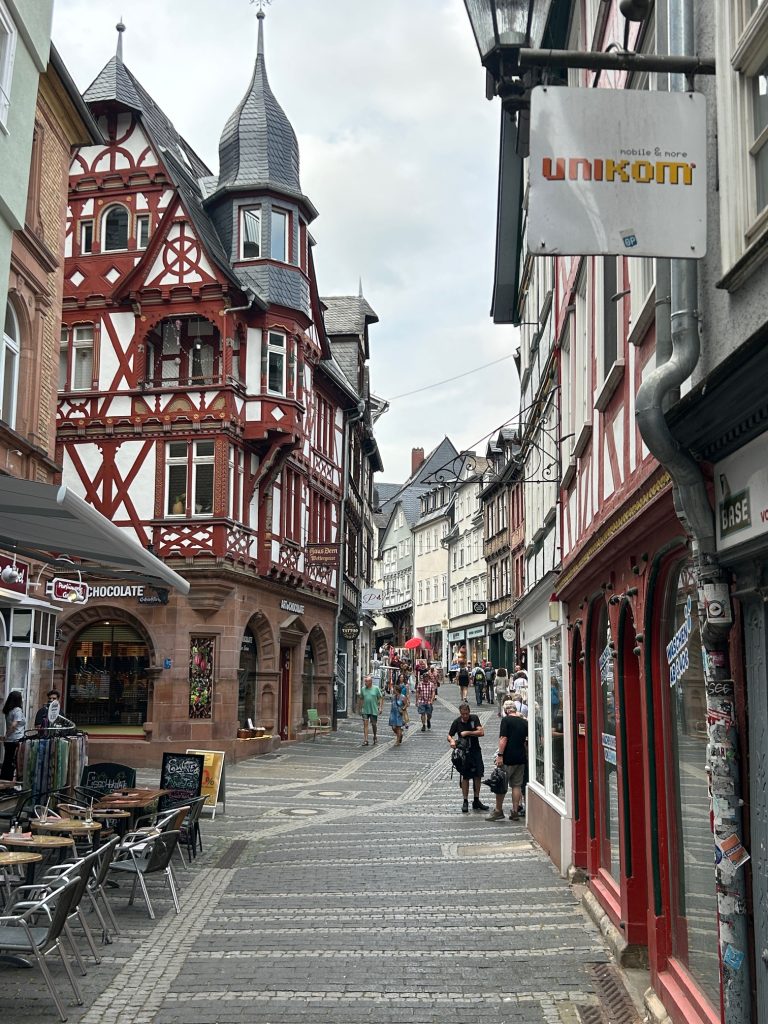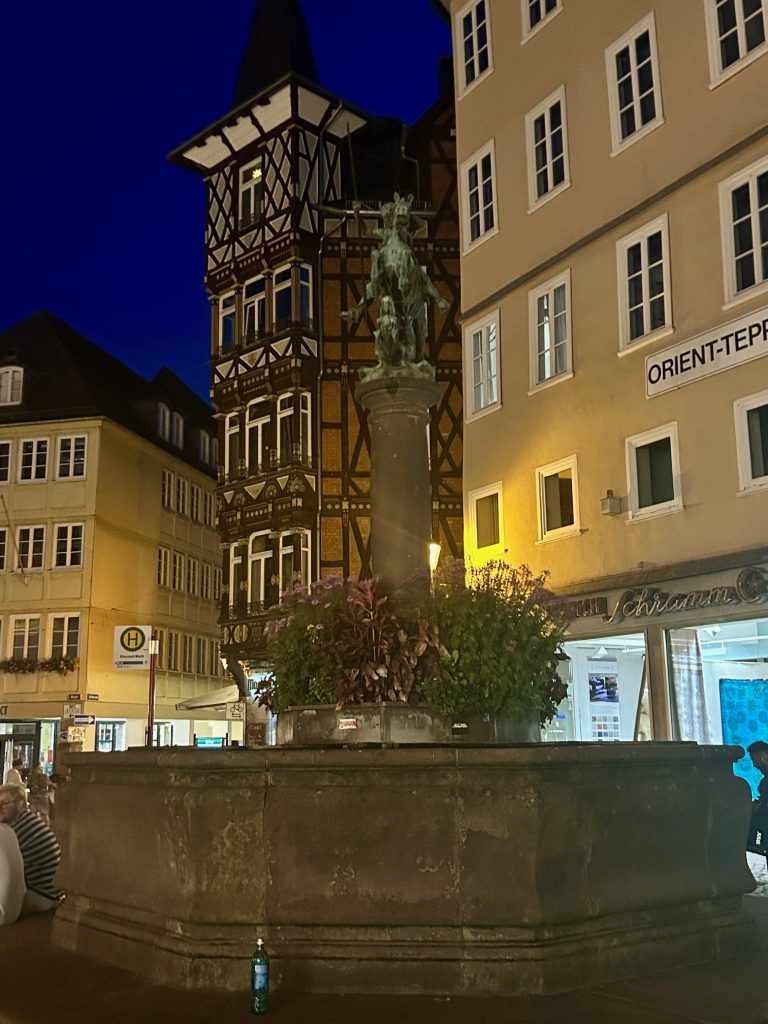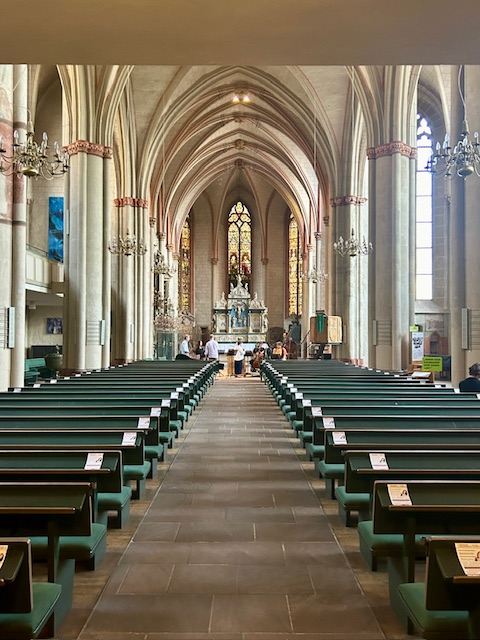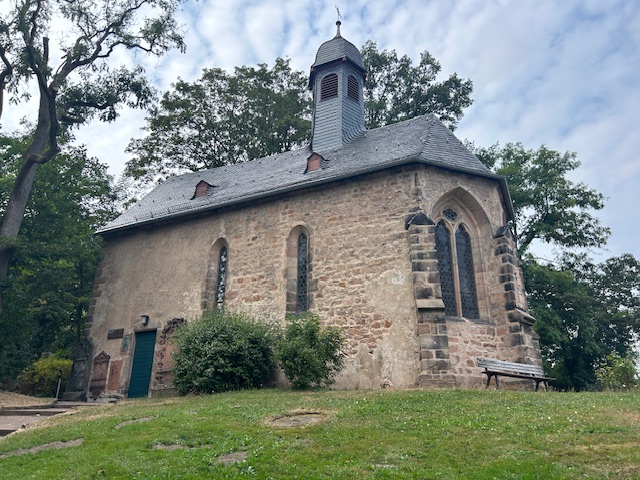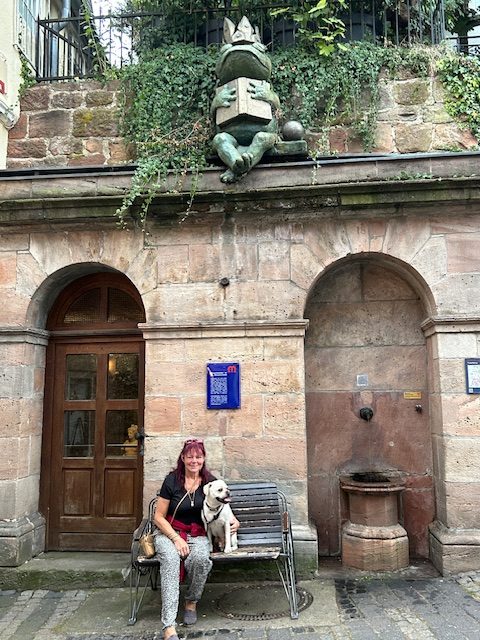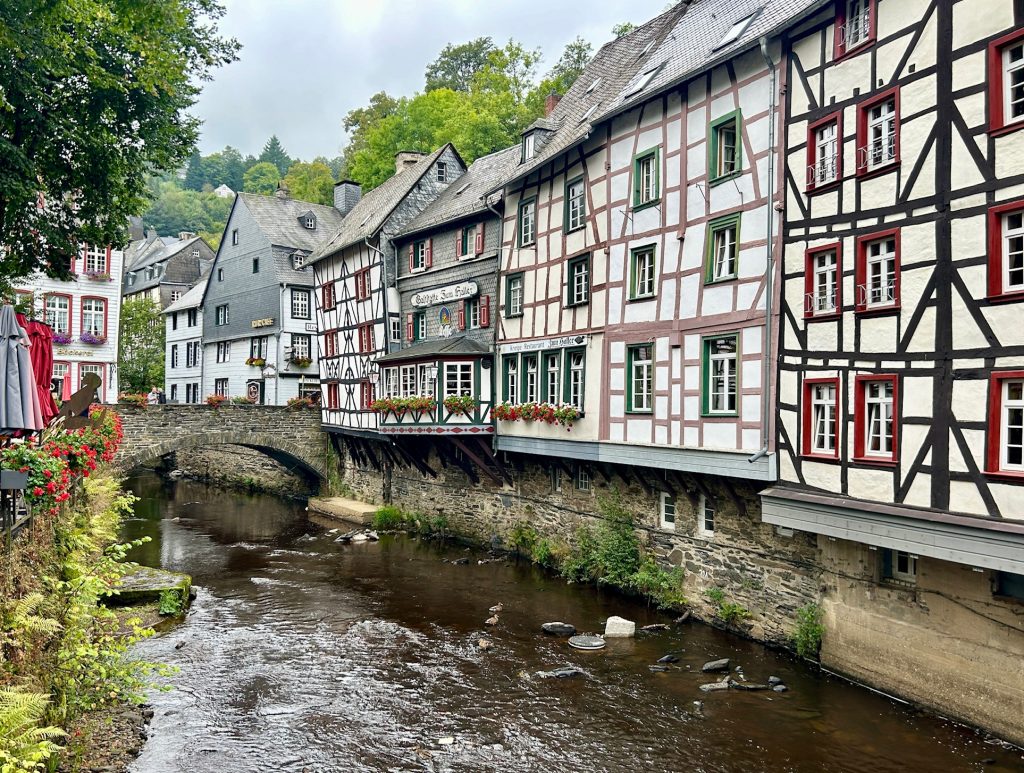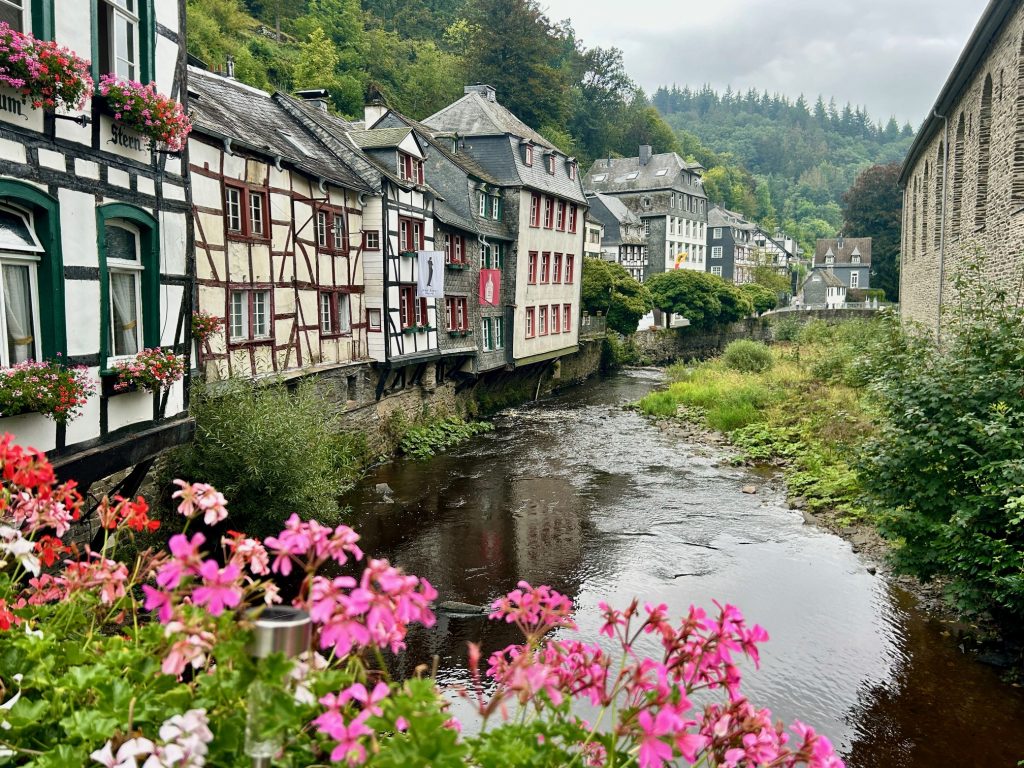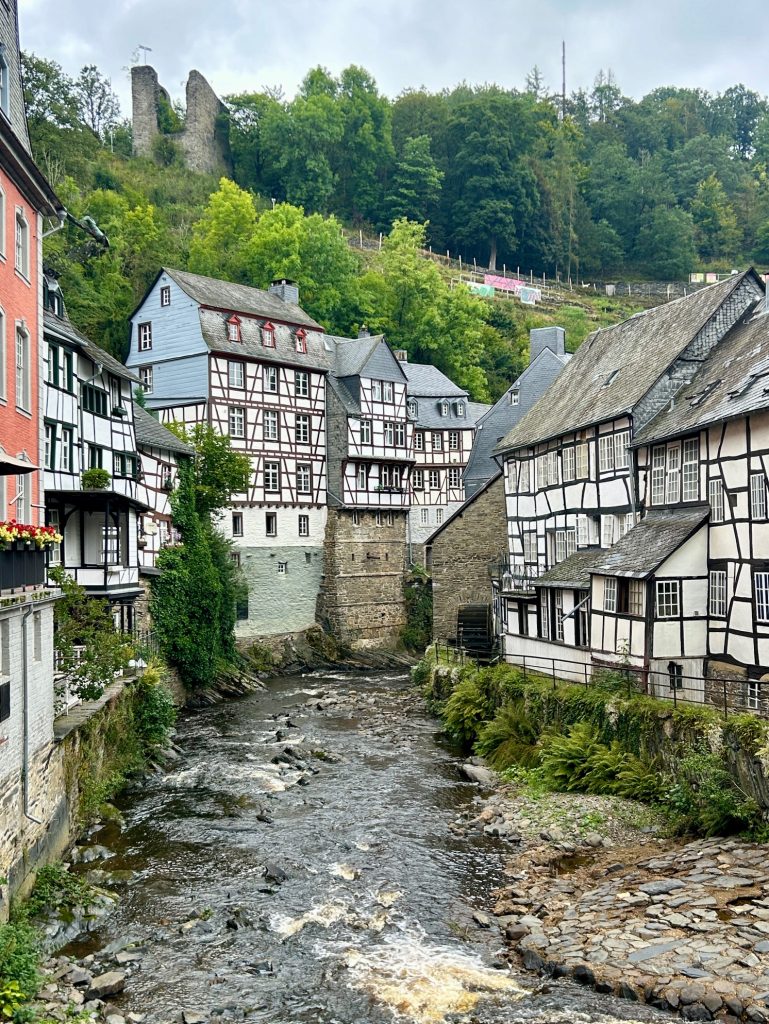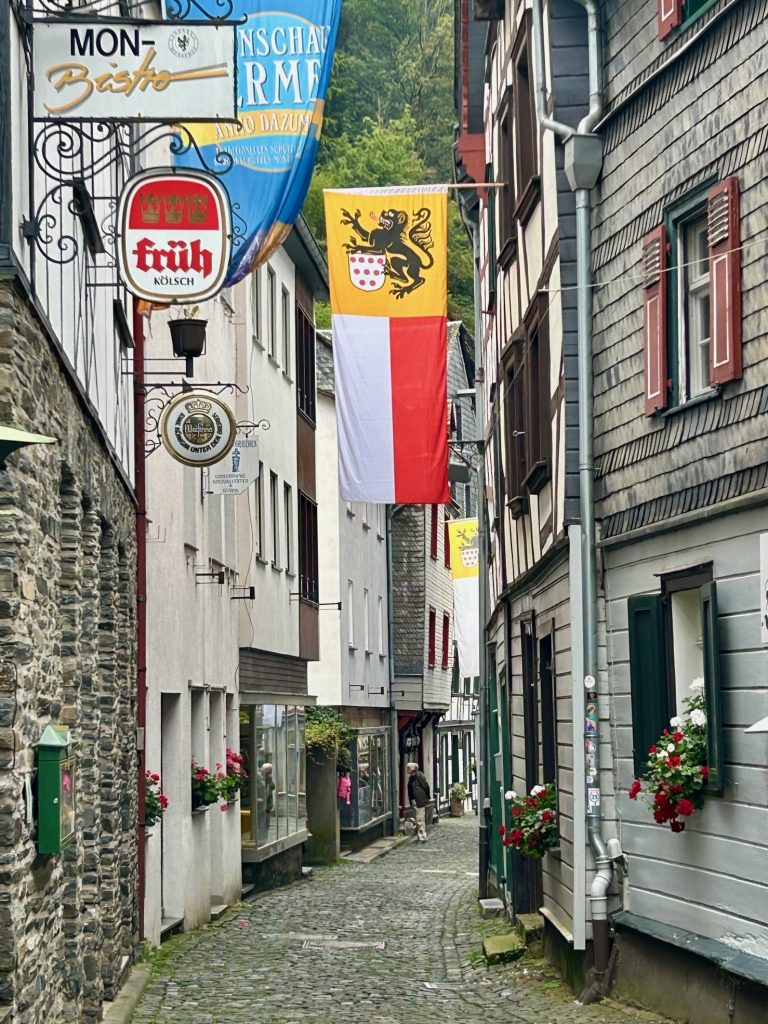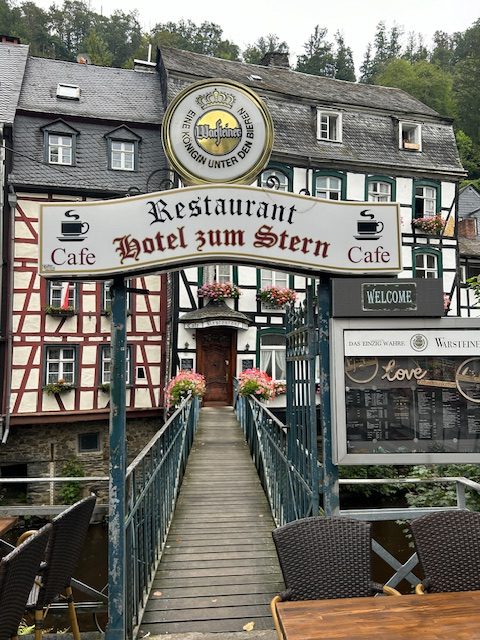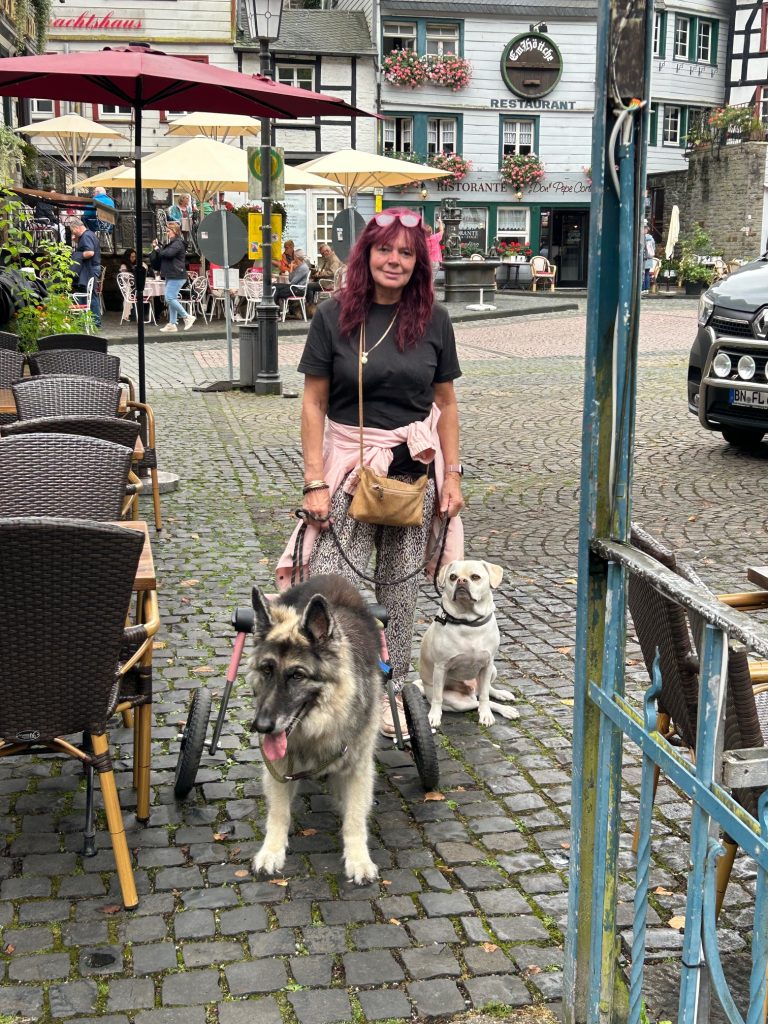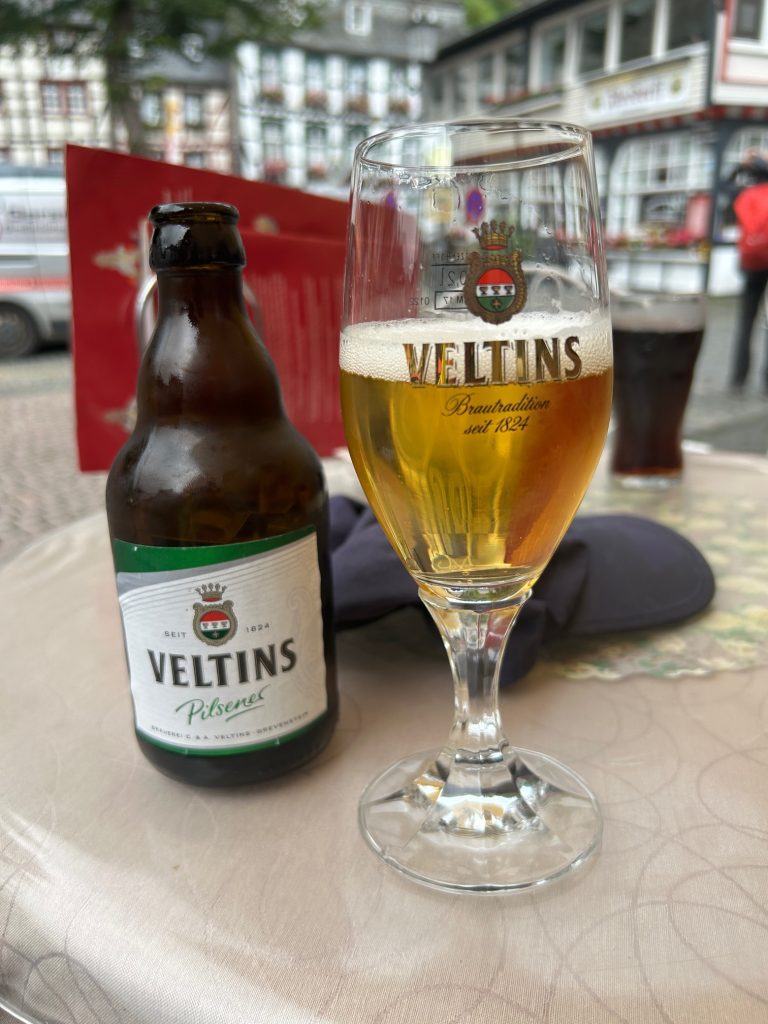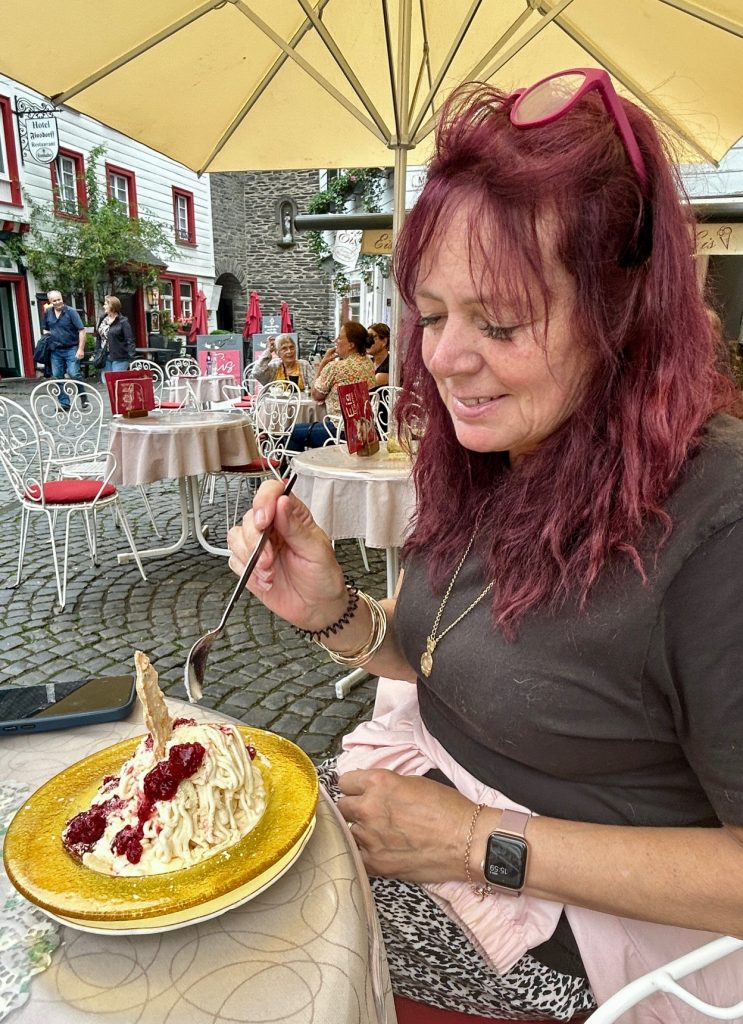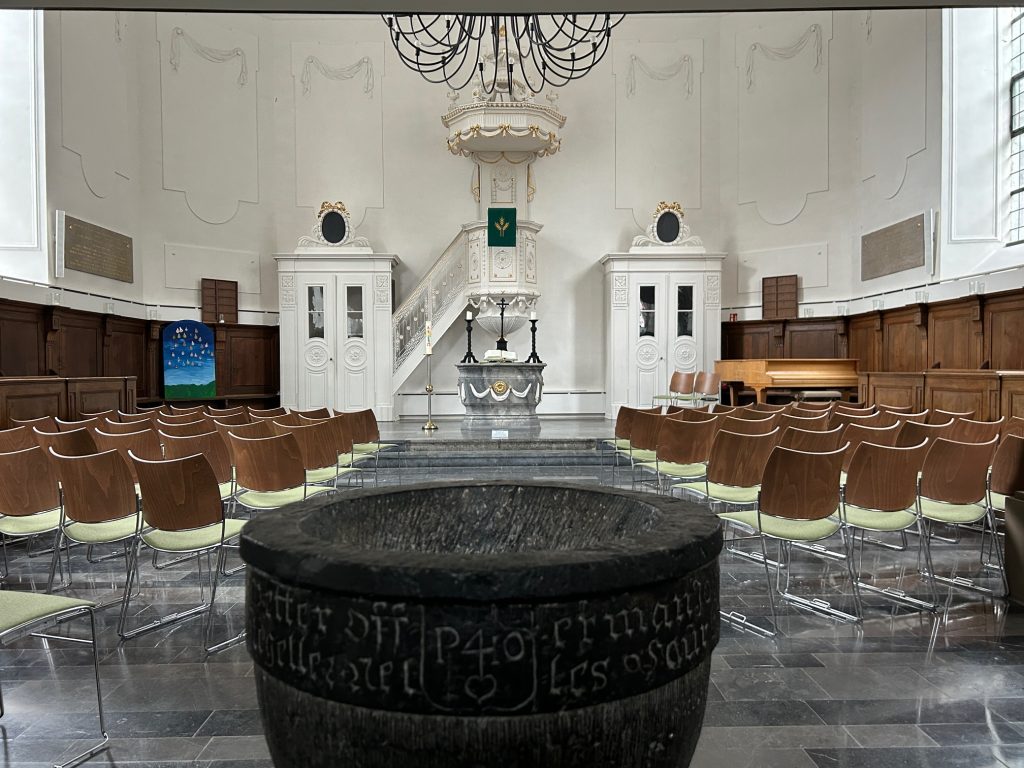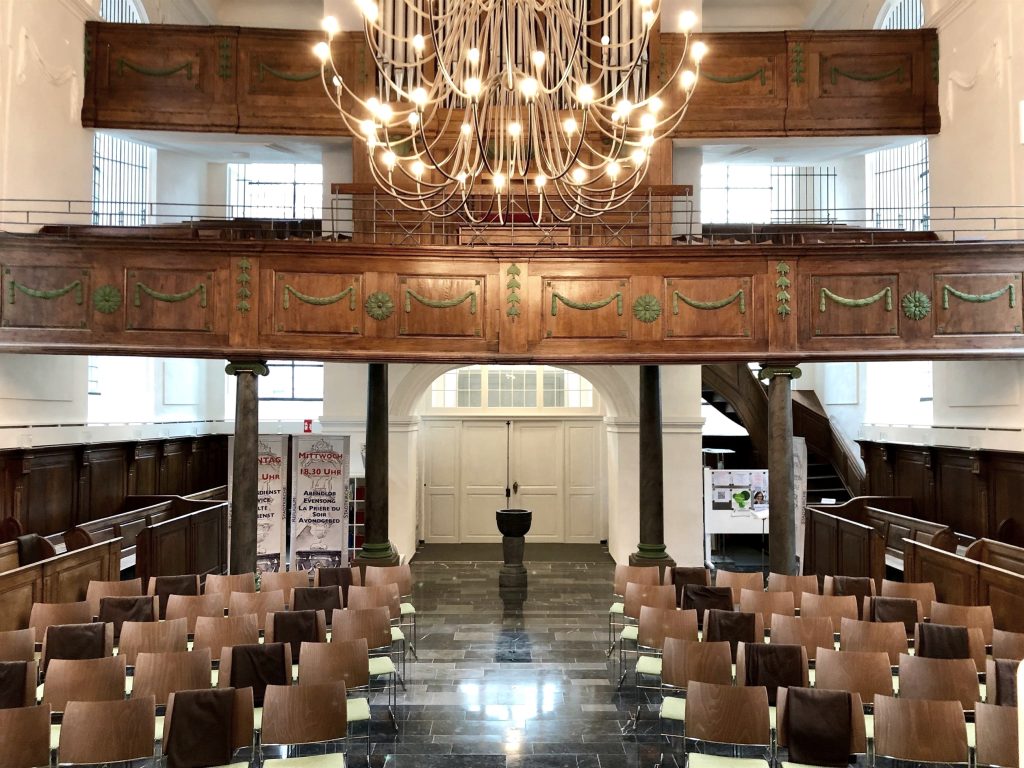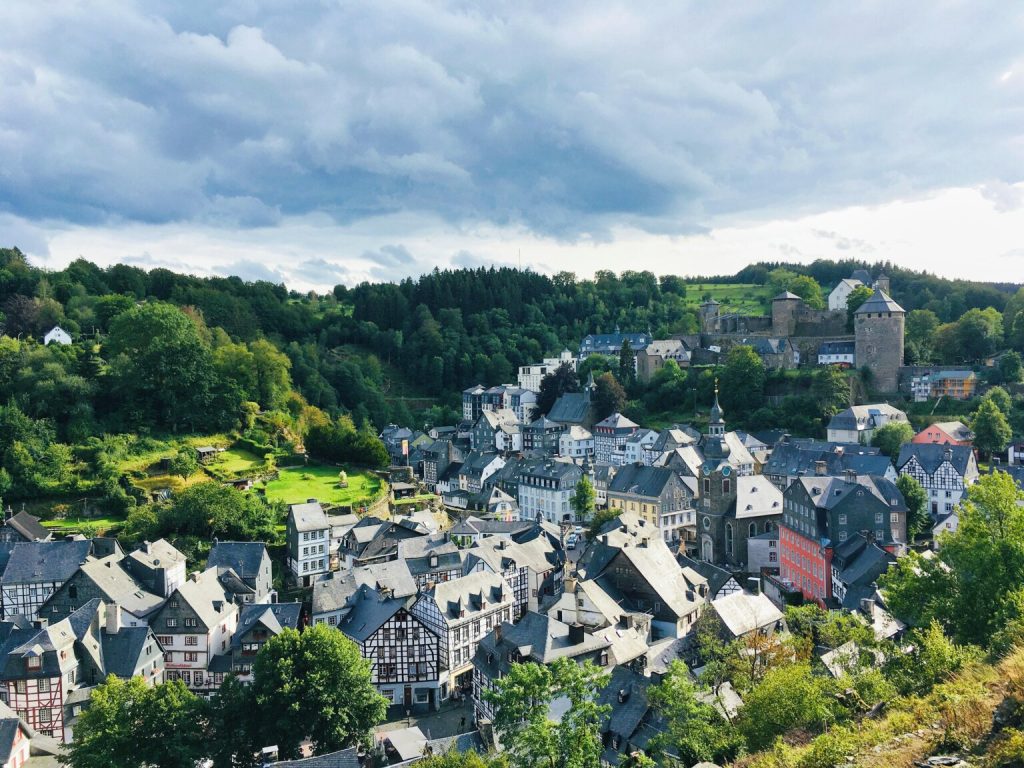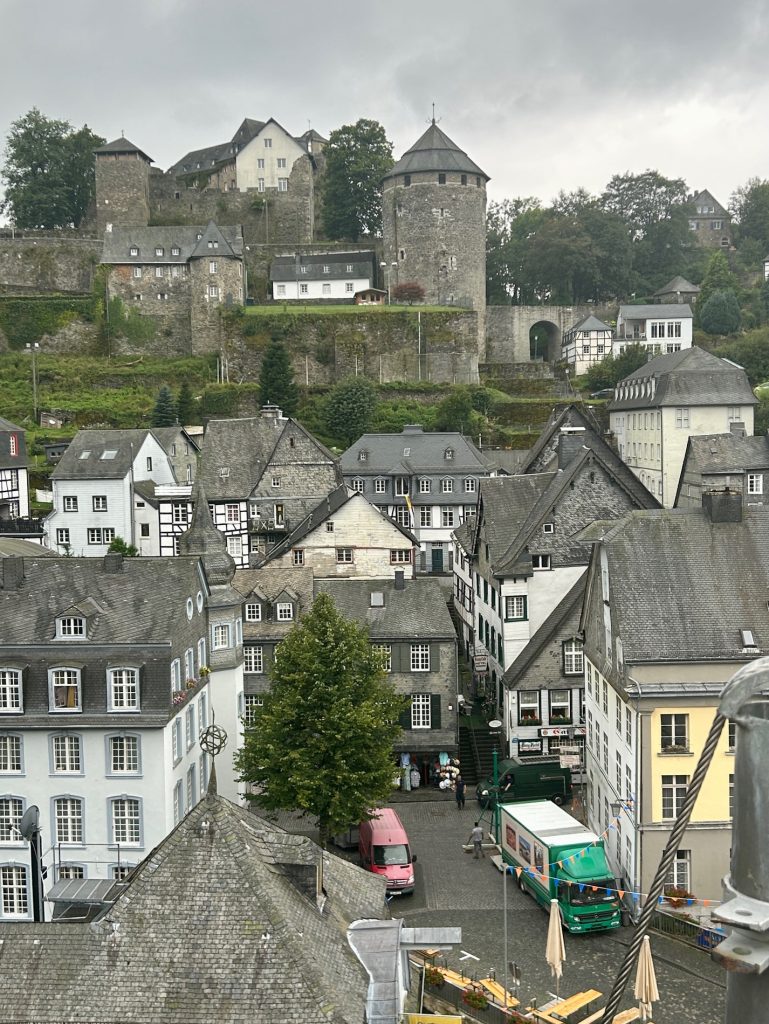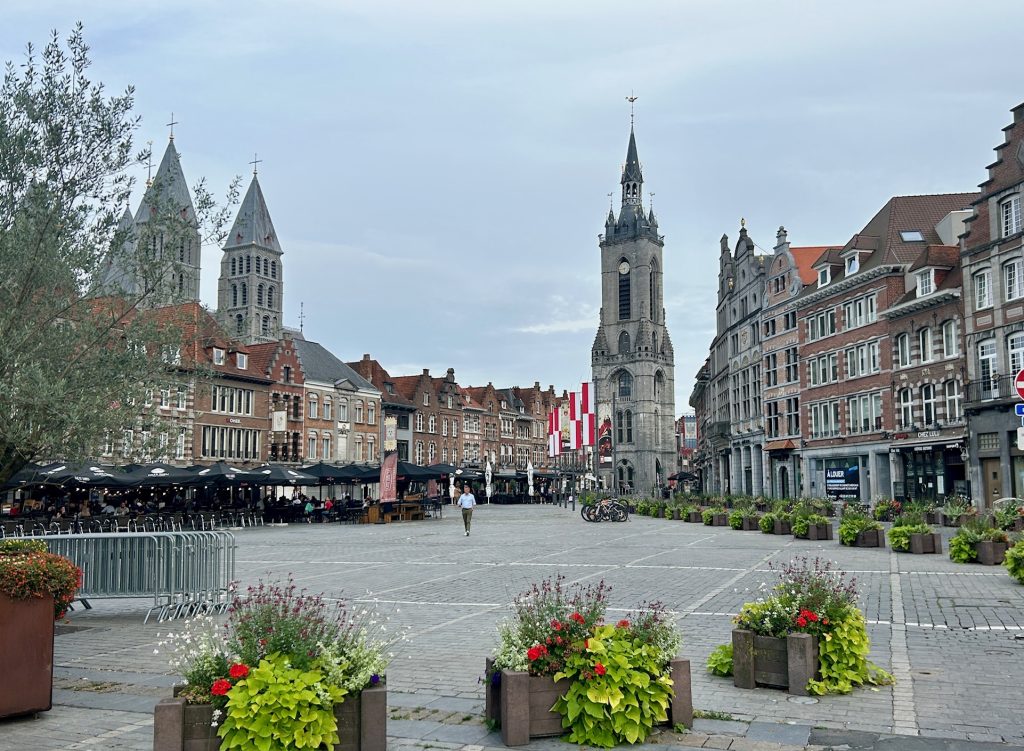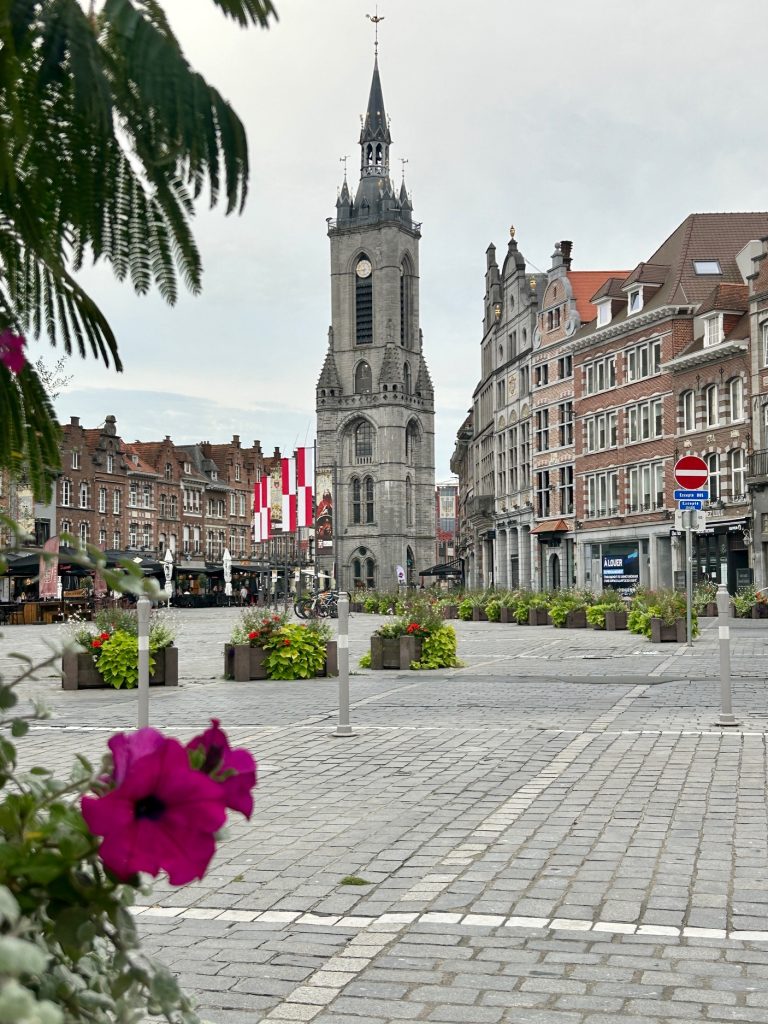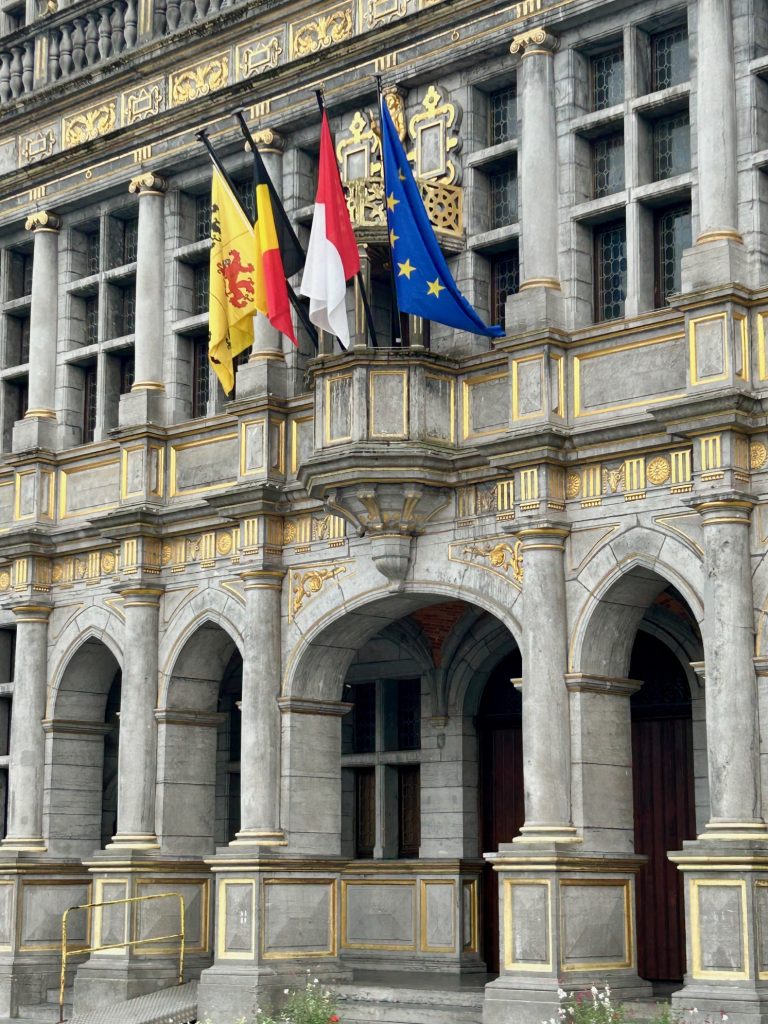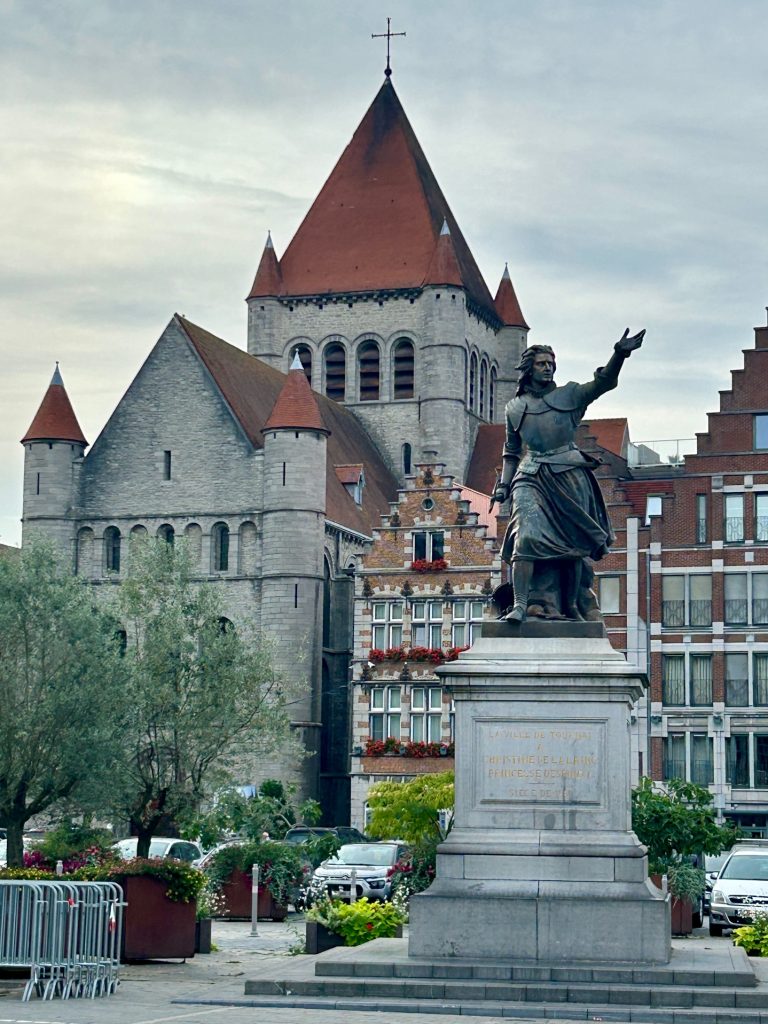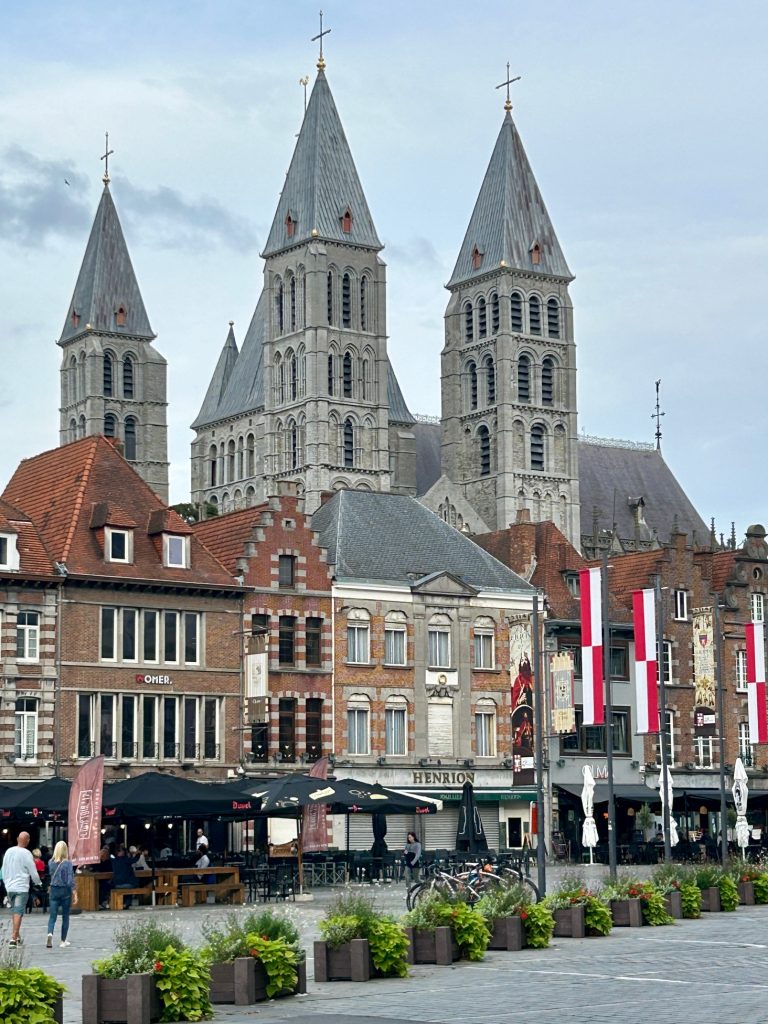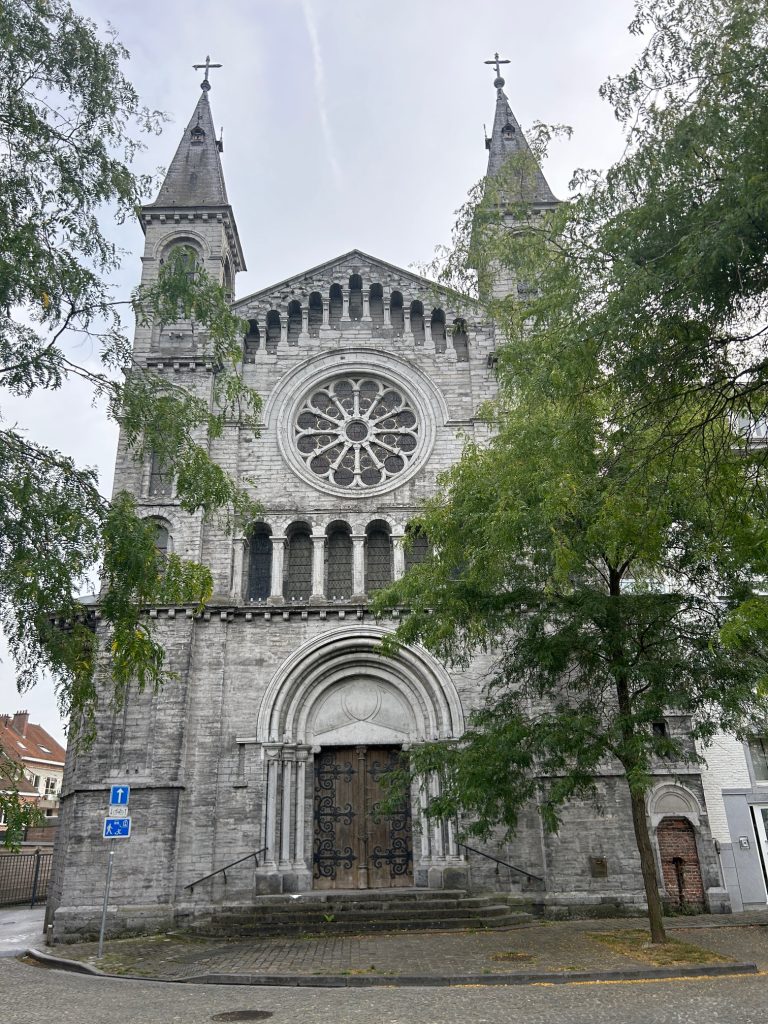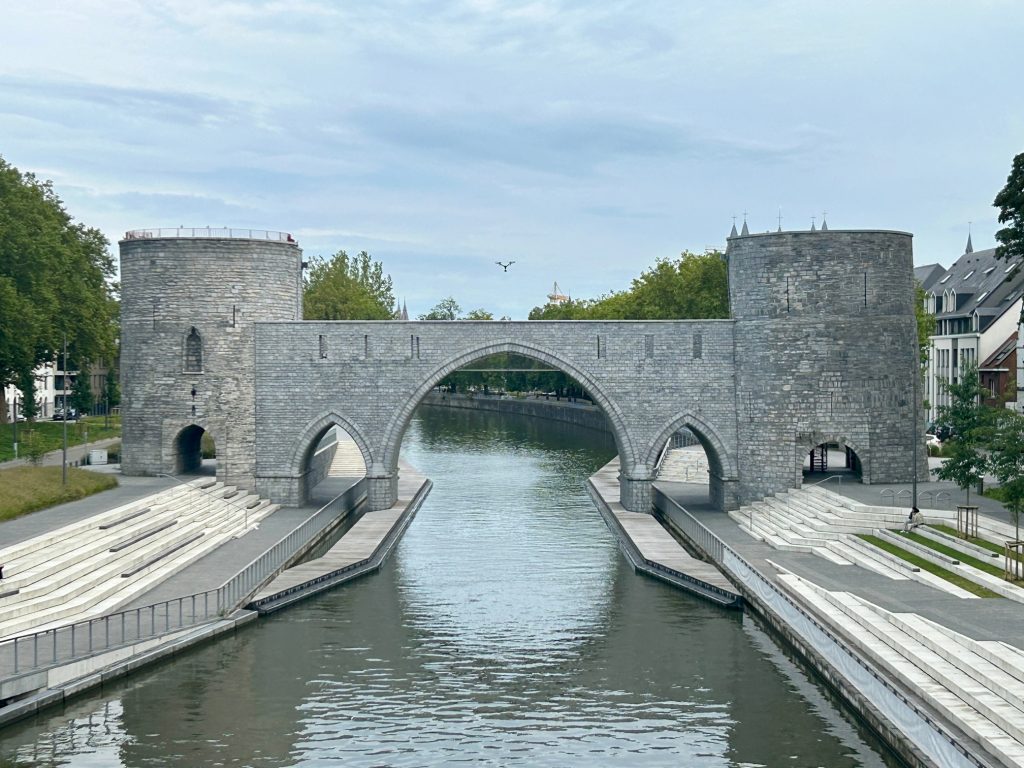We were in Violes, in the southern Rhone Valley, to sample the wines at the Domaine des Favards and thereafter enjoy their annual celebration ‘Bodega La Nuit Favardaise’ (although, in truth, we didn’t know about the winery’s annual celebration until after we arrived). The Domaine des Favardes is first and foremost a very successful working winery of 25 hectares owned by the Famille Barbaud but they have converted a large stretch of land next to their bodega into a first class campsite. How Vanya finds these places I don’t know but we booked in for two nights.
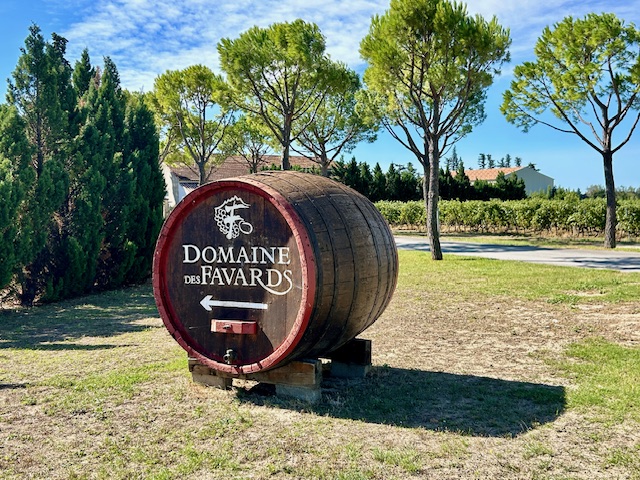
There was nothing open in the village of Violes that first night. In fact, there is very little in the village to open. Google ‘Francethisway’ and check out Violes and everything they write about is at least 5 miles away – witness Seguret and the Dentelles de Montmirail.
Please don’t misunderstand; I’m not complaining about Violes. We know from our earlier travels in this Region that there’s plenty to see and do in the area, if not Violes itself. We were there to relax and enjoy the local wine and we weren’t going to venture out while the Mistral was blowing a hoolie. Our first evening was therefore spent in the campsite’s restaurant enjoying some good French cooking and getting a sneak preview of a couple of the local wines.


A little about the Mistral before I continue. It’s a wind and it had been blowing for a few days before we arrived and showed no sign of abating. It can blow any time of the year but is more common in the autumn and winter. It occurs when warm air coming in from the Mediterranean meets the cold air from Central France and the Alps. The warm air rises leaving a space for the cold air from the mountains to fill and this cold air then sweeps down through south east France to the Mediterranean. It makes for very strong cold winds which get even stronger as they are funneled through the narrow Rhone Valley. I heard a local man describe the Mistral as ‘exhausting’. He could not have described the phenomenen better but, it wasn’t going to spoil our wine tasting the next morning and, anyway, on the plus side this strong wind clears away pollution and makes for very blue skies.
Unfortunately for Vanya, the Domaine des Favardes produce just two white wines; a Cotes du Rhone ‘Les bons moments’ and a CDR ‘L’affute’ and as a result her wine tasting session the next morning was soon concluded. We shouldn’t have been surprised because only 6% of wines across the Rhone Valley are white, 13% are rose and a whopping 81% are red. There was no doubt which of the wines would win the white category either because the L’affute is stored in oak casks and Vanya hates oaked whites. So sorry for laughing Vanya.
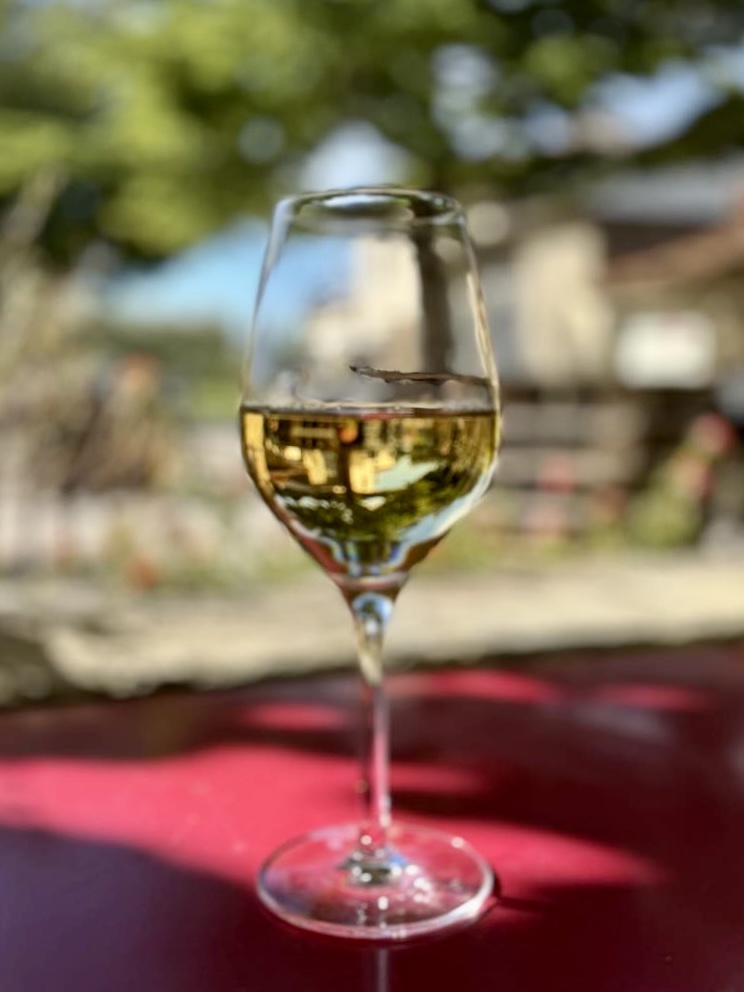
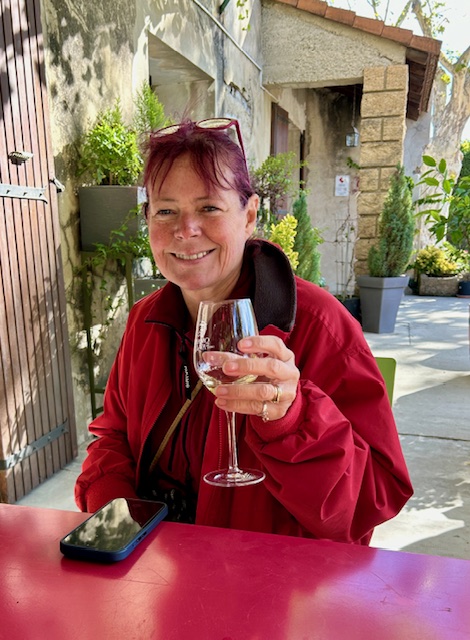
I didn’t mind either of the white wines but it was the reds I was looking forward to tasting and when our host started on them, they just kept coming. I was a very happy chap.


Before this session, I knew very little about Cotes du Rhone wines other than that there are 4 grades which are produced across both the Northern Rhone and the Southern Rhone (where the terroir is somewhat different). The best wines are the ‘Crus’ AC; the next best are the ‘Villages’ AC from a named village (e.g. CDR Villages Plan de Dieu and CDR Villages Chusclan) – not just any old village but one of 20 specified villages. The third level are ‘Villages’ AOC which are not produced by one of the 20 specified villages but by a CDR accredited commune. The fourth and final level, which amount to some 50% of the area’s controlled wine production, is the CDR AOC. Anything else just isn’t Cotes du Rhone (officially).
I’m not sure I learned a great deal more about Cotes du Rhone wine at the Domaine des Favards but I certainly got to taste a few. These included (a) Les bons moments rouge 2023 13.5%; (b) CDR Les Grandes Terres 2022 (Grenache, Mourvedre & Syrah grapes) 14.5%; (c) CDR Villages 2020 (Grenache & Syrah) 14.5%; (d) CDR Villages Plan de Dieu 2022 (Grenache & Syrah grapes matured in oak barrels for 12 months and at their best after 6-8 years) 14.5%; (e) CDR Villages Plan de Dieu les Givres 2021 (Grenache, Syrah, Carignan & Cinsault) 14.5%; (f) CDR Villages Plan de Dieu les Brigands 2022 (Cepages, Grenache, Cinsault & Syrah and at their best after 8-10 years) 14.5%; (g) CDR L’une et L’autre 2020 (matured in oak barrels for 16 months and also at their best after 8-10 years) 14%.
There was only the one wine I was unsure about, the Les Givres. The rest were fine but the winner for me was the L’une et L’autre with the ‘Plan de Dieu’ (a named village) coming a very close second. Needless to say, we purchased a mixed case of our favourites.

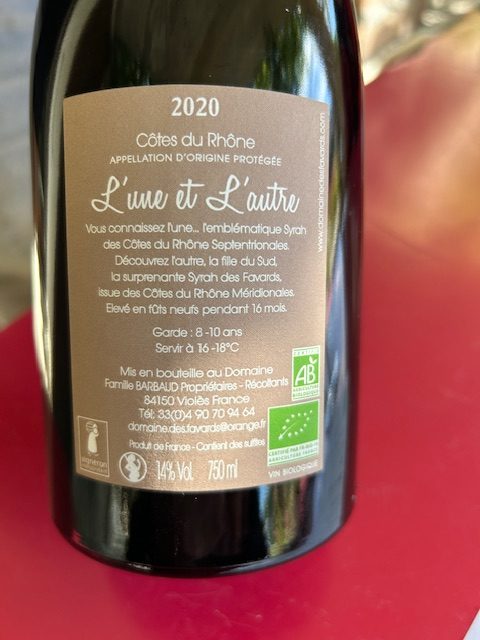
We were sufficiently rested when, that same evening, we made our way back to the winery to join La Nuit Favardaise. It was well attended by residents of not just Violes but various other villages in the area and all had dressed having regard to the continuing strong winds (in what the Geordies would call ‘their big coats’). The Mistral was still in full flow.
I tried a couple more glasses of the Les Givres during the course of the evening and, I am pleased to report, I warmed to it.
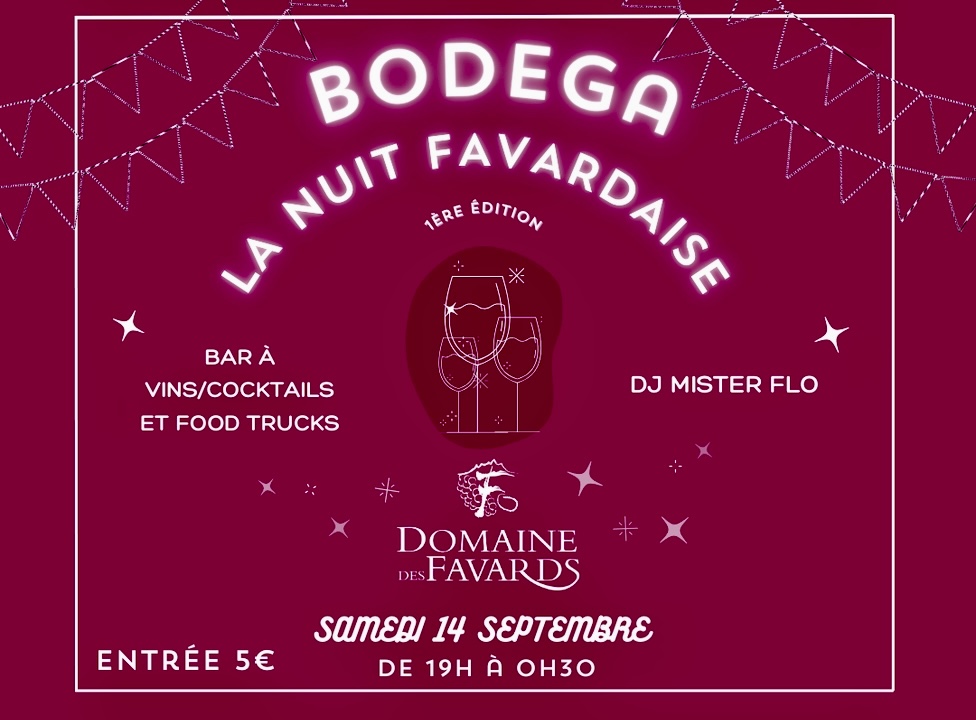
The locals are clearly made of hardier stuff than us because within an hour, Vanya and I decided to retire to the Van. We can attest to the fact, however, that the party continued to precisely 0H30 as advertised on the admission ticket. The music played by the DJ Mister Flo was good and loud.
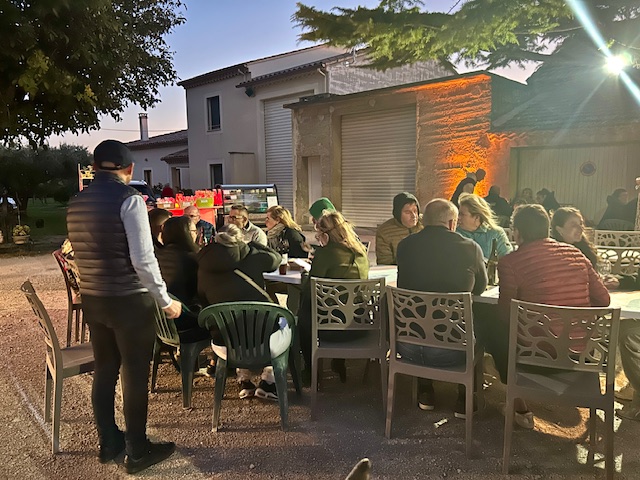

The next day we left Violes to drive further south and west to Les Argeles sur Mer, near France’s border with Spain. Before leaving I, once again, battled my way into the village for a final look and to buy some fresh bread. My first thoughts apropos the village were correct. It really doesn’t have much about it but, the bakery at the main cross-roads produce first class bread and the nearby cafe-bar does a good coffee.
There follows a couple of photos of the village…

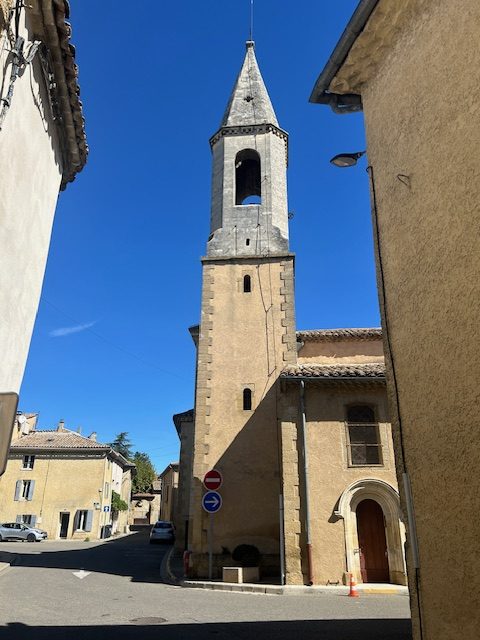
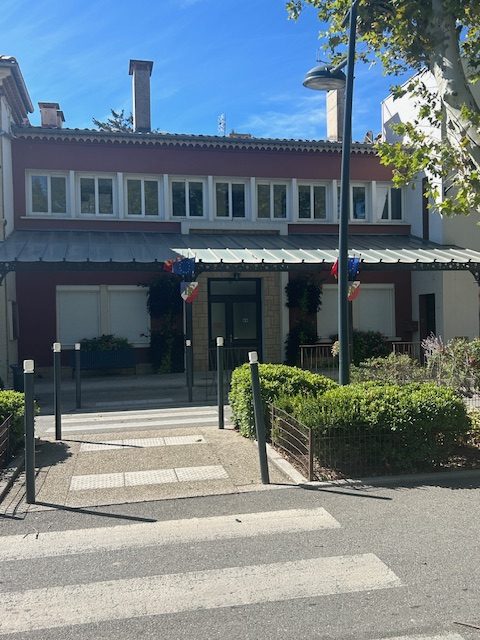
Les Argeles sur Mer next… and of course, one of my favourite wineries (Les Vignerones des Alberes) is very close by at Saint Genis des Fontaines.

